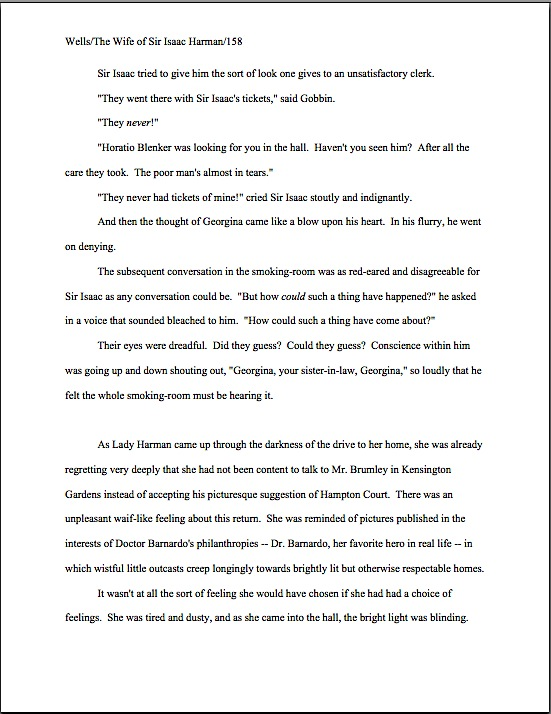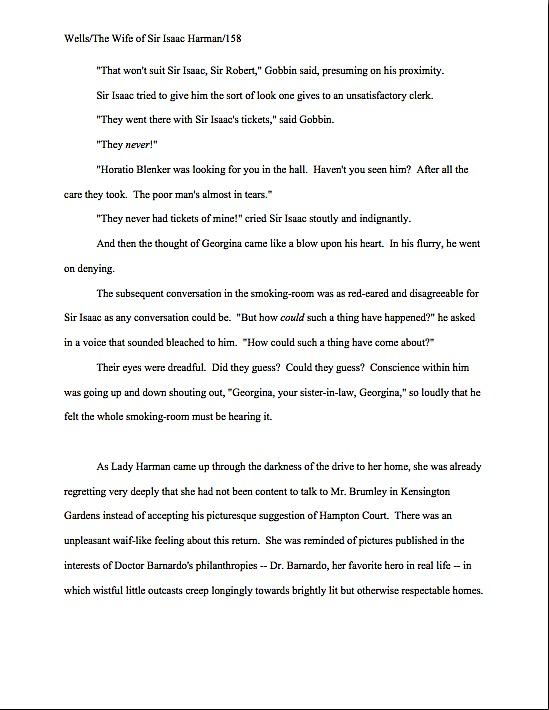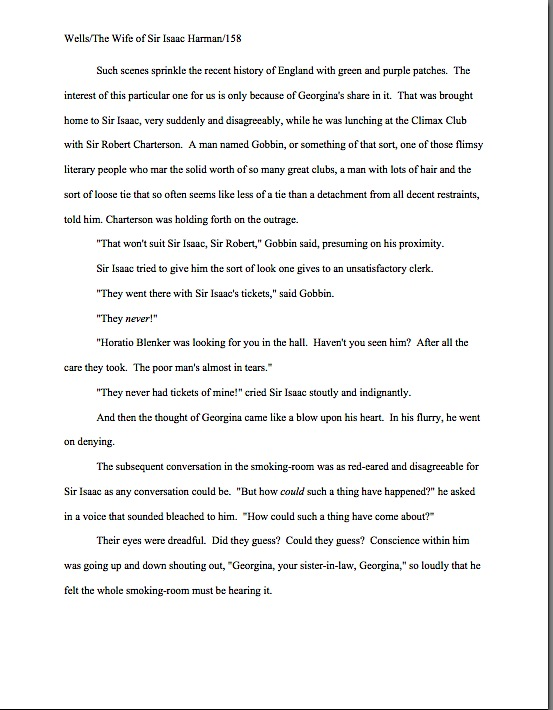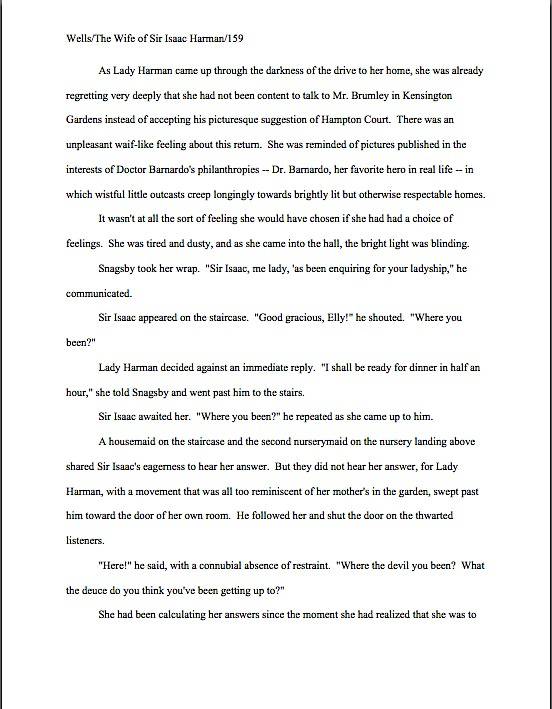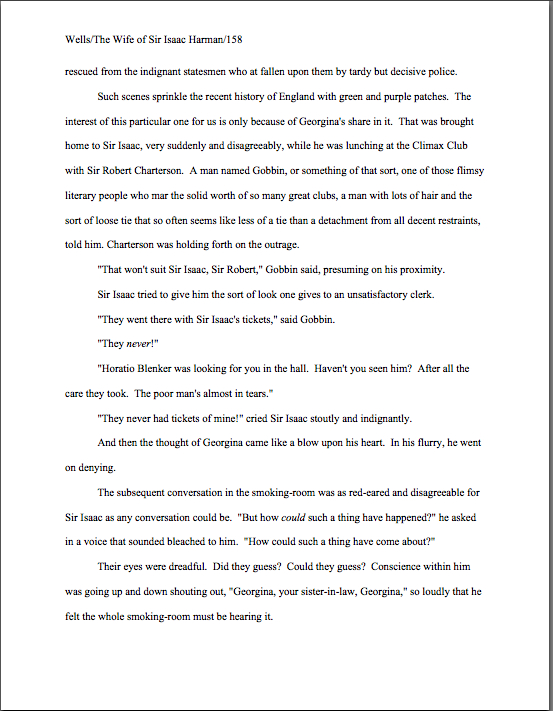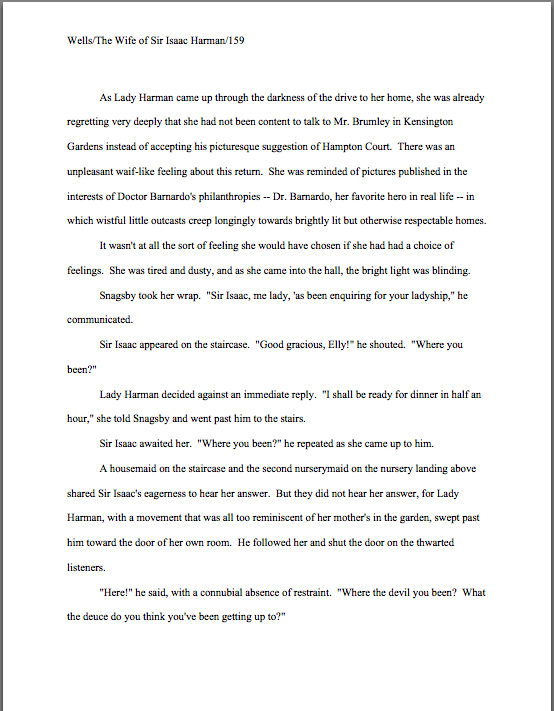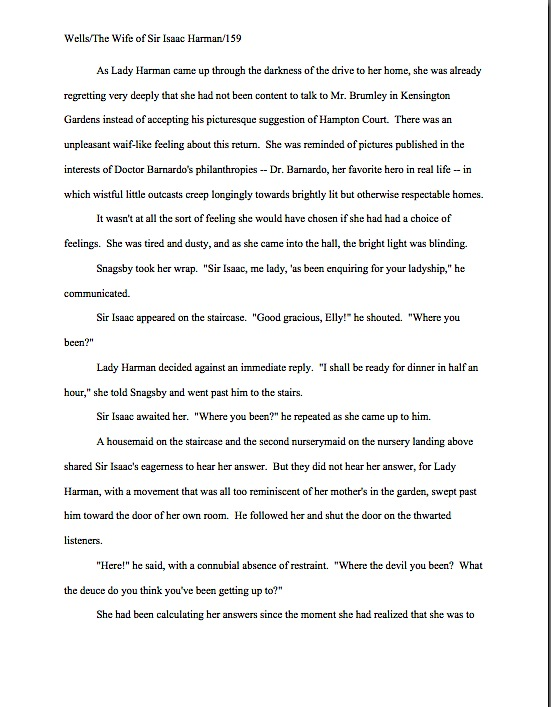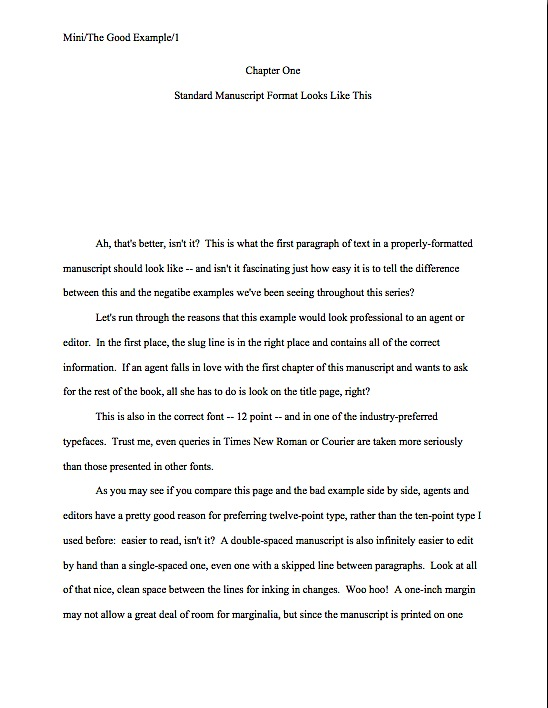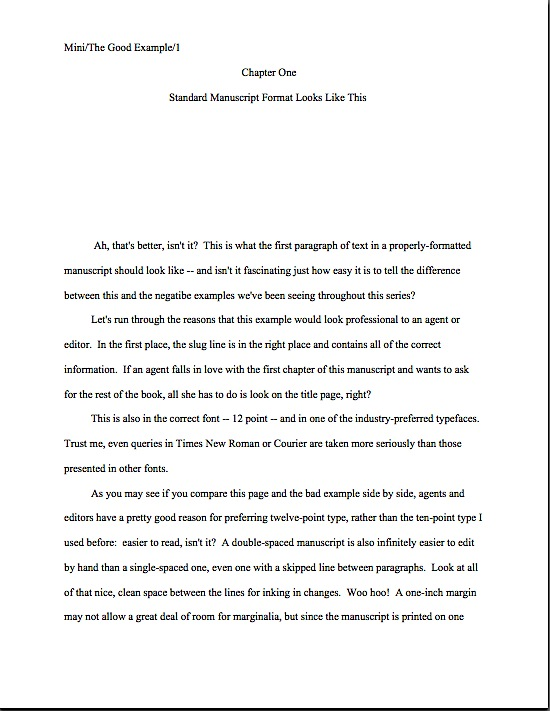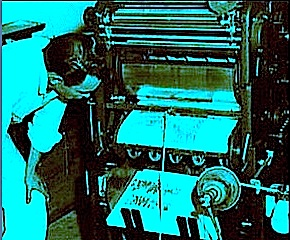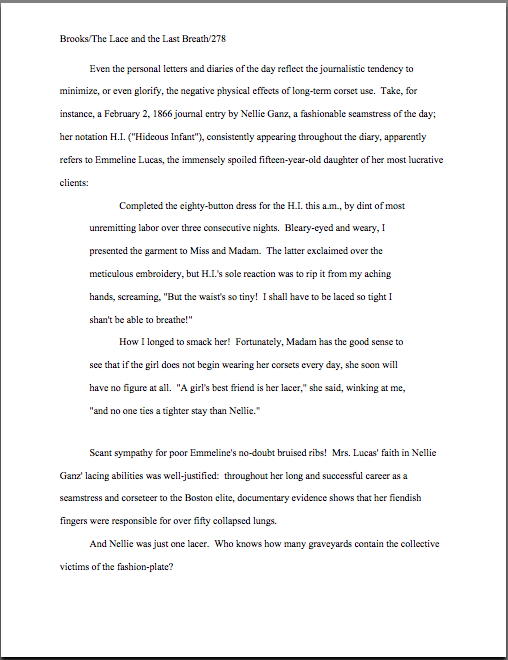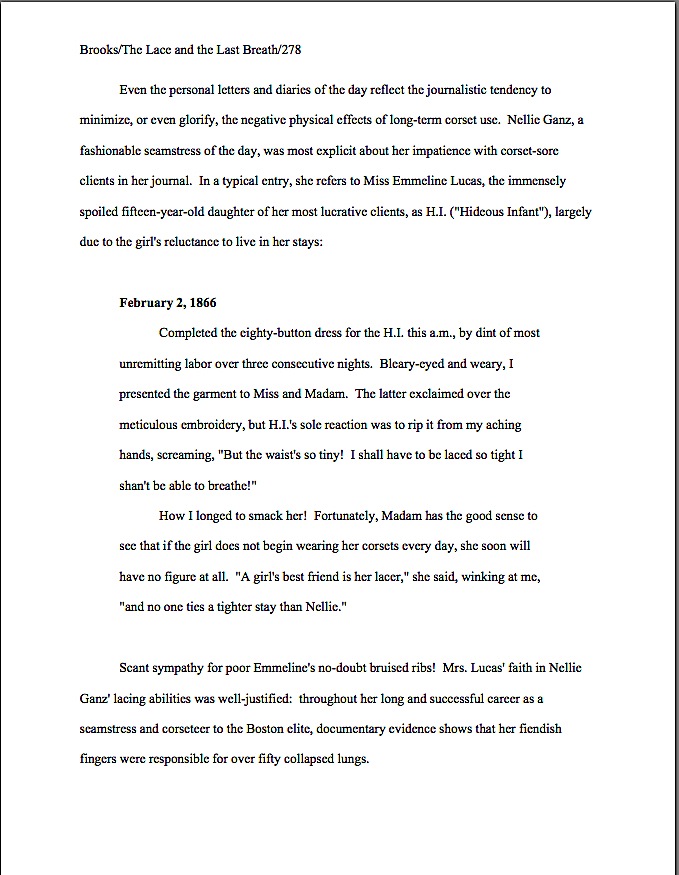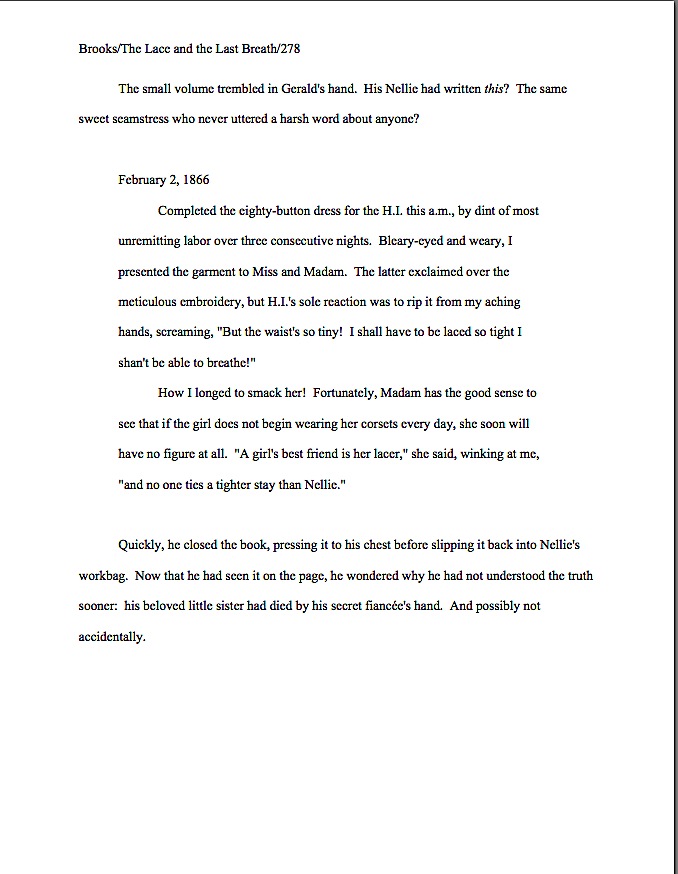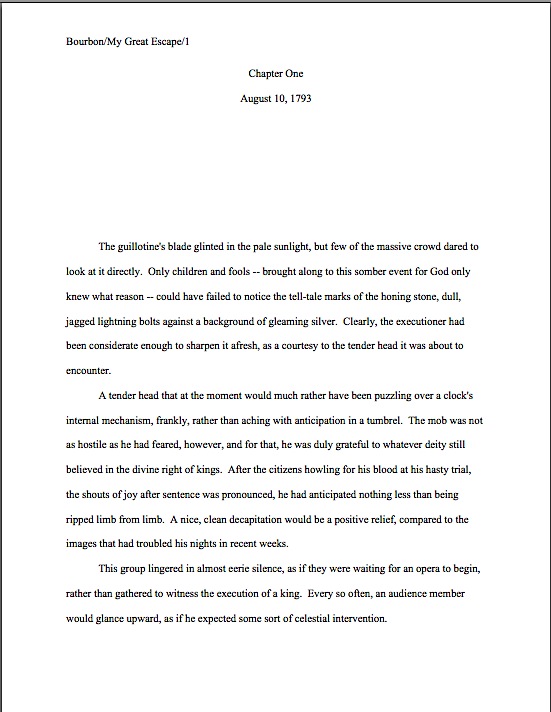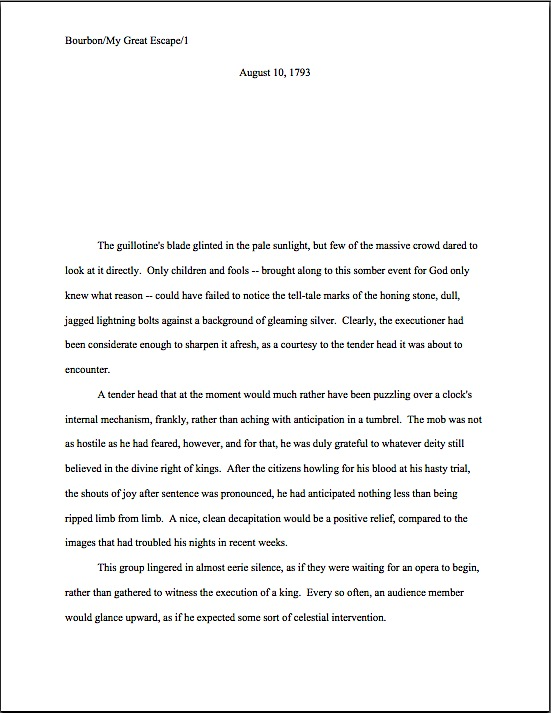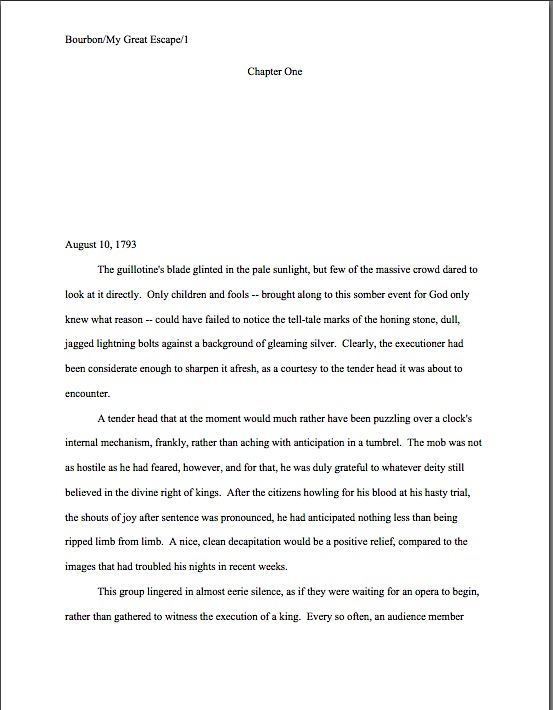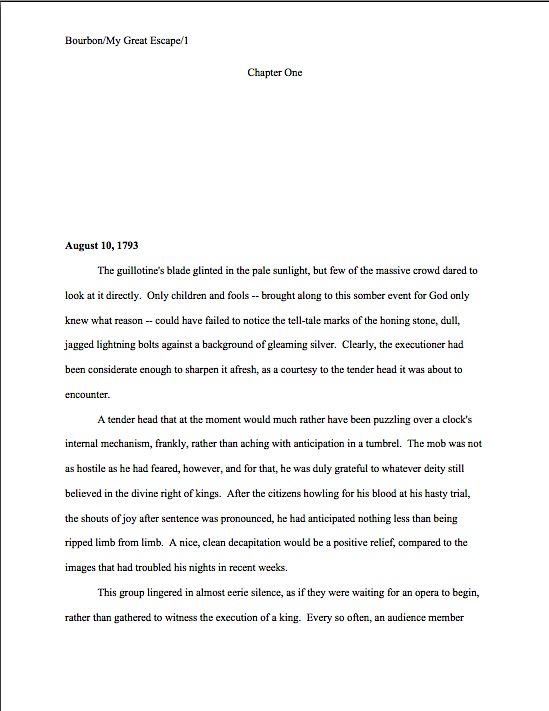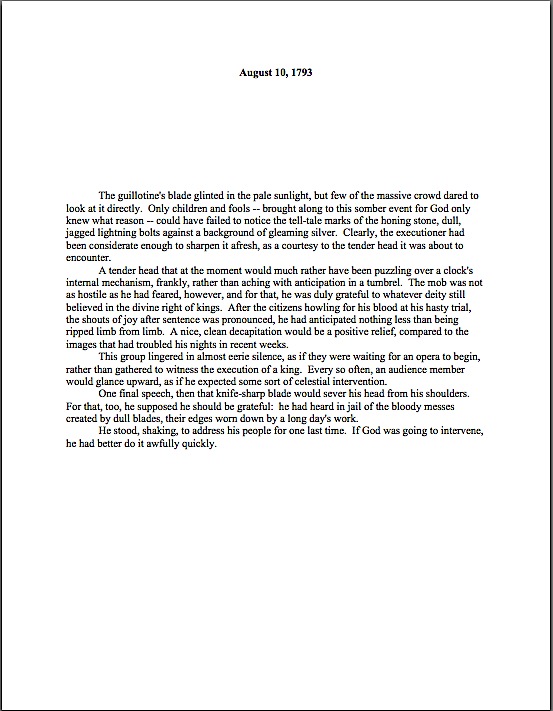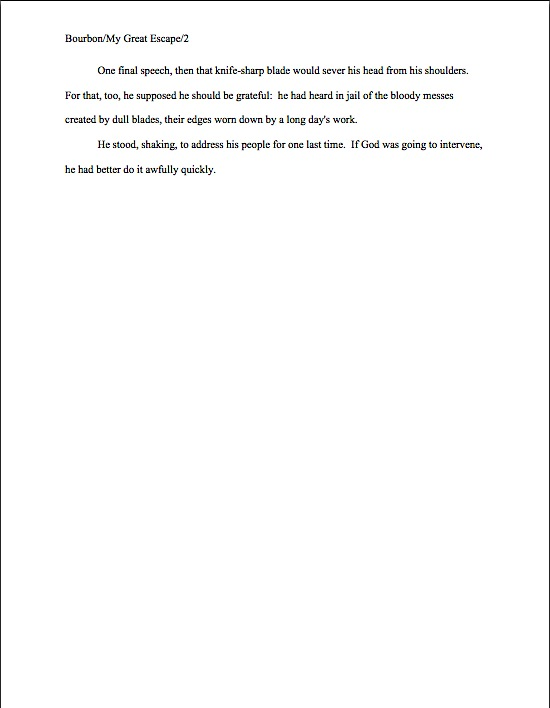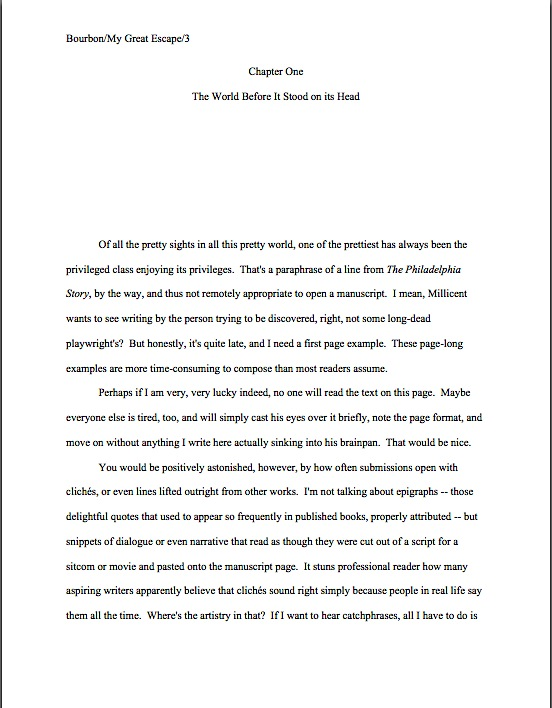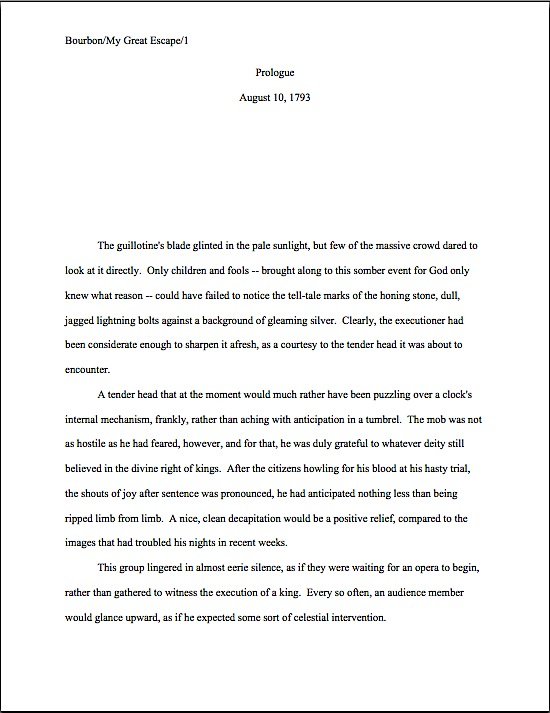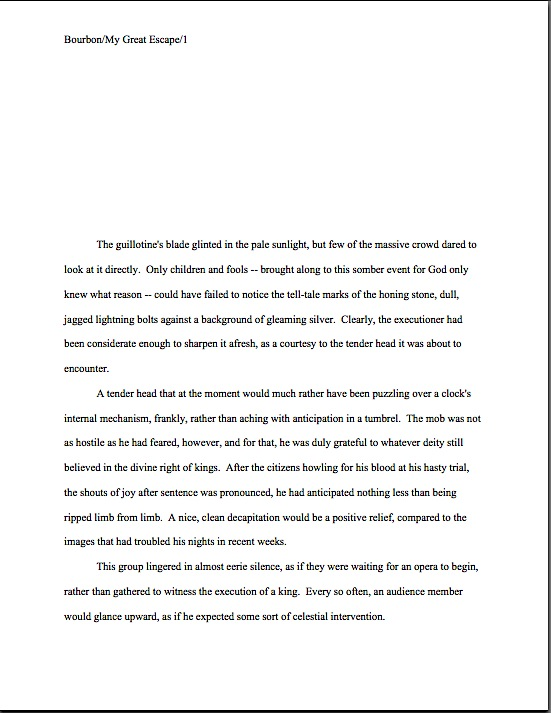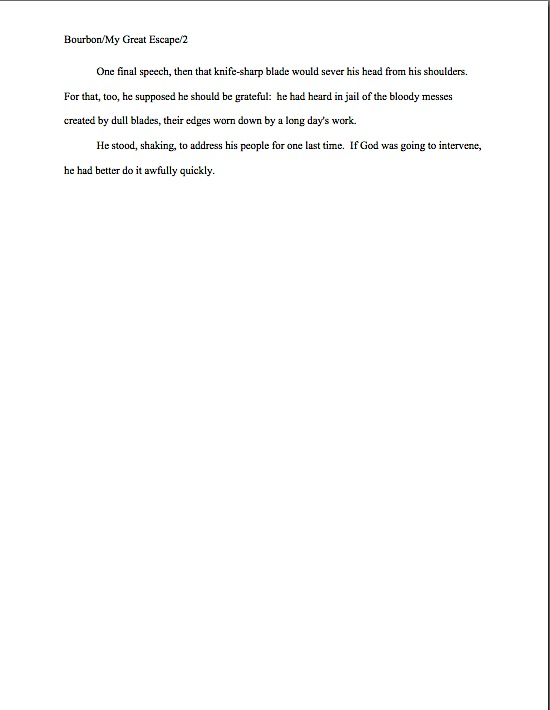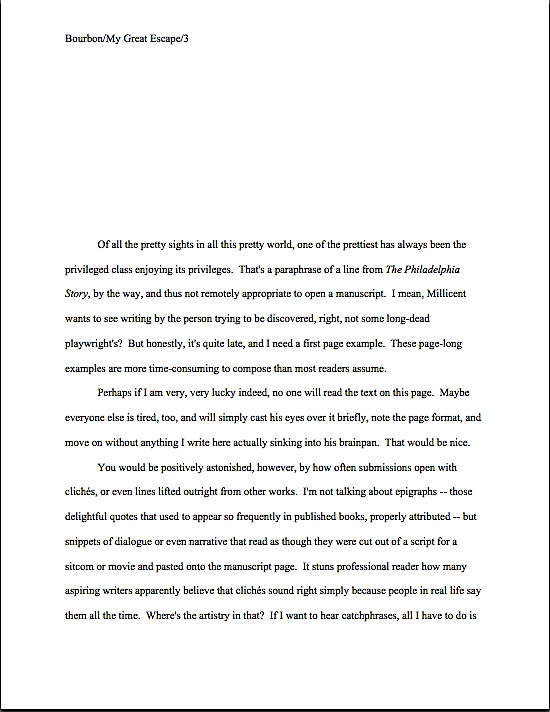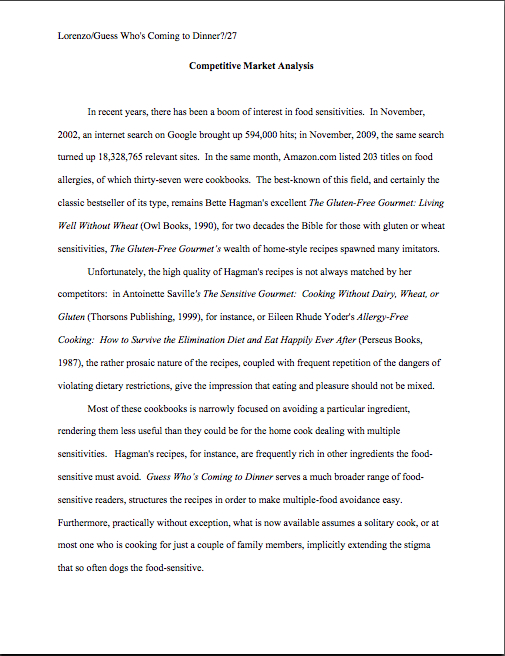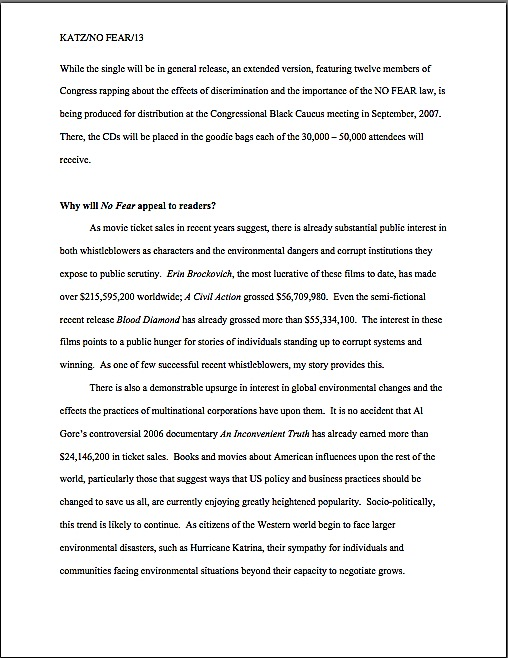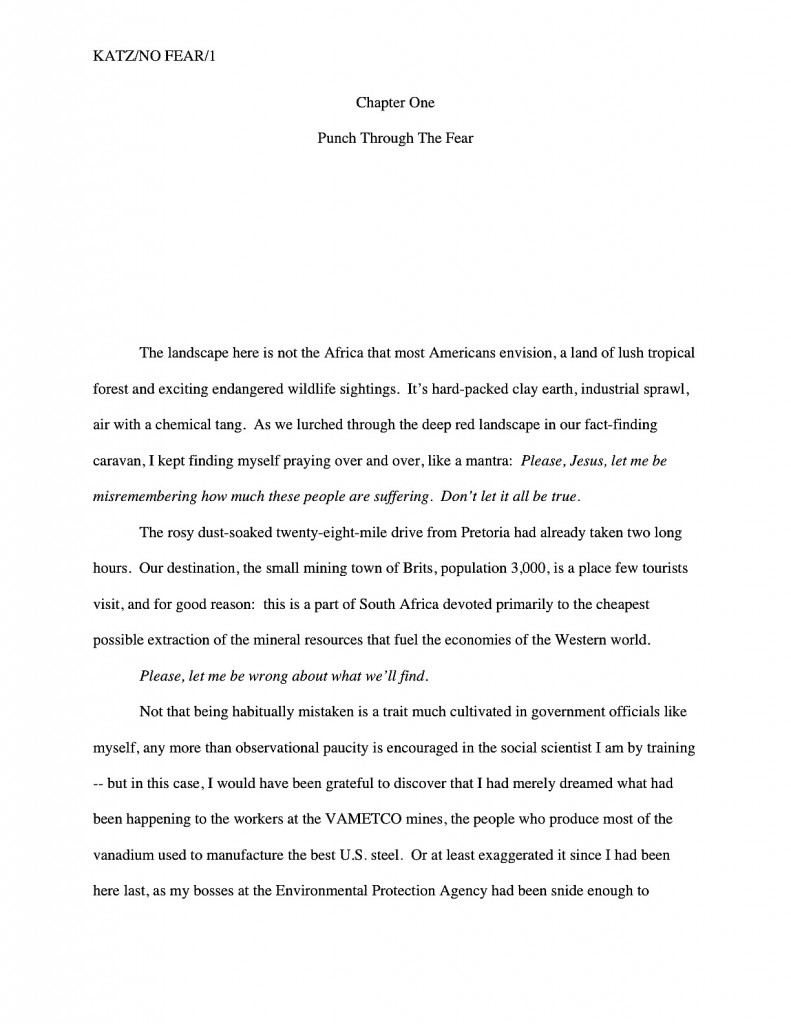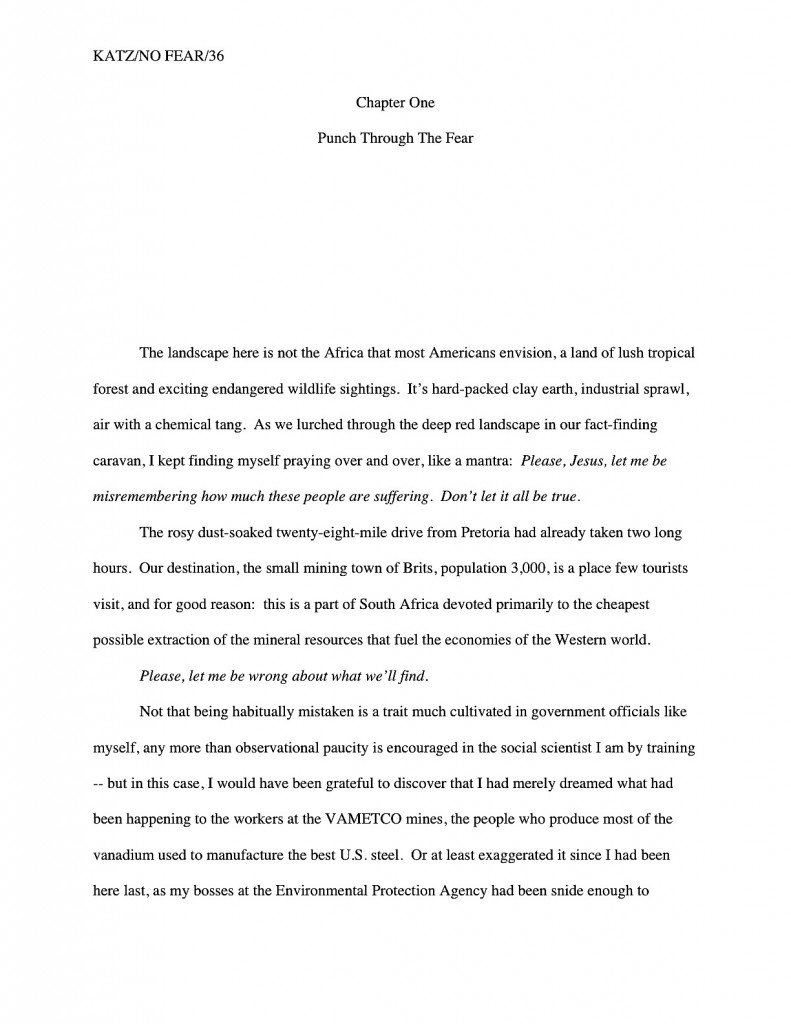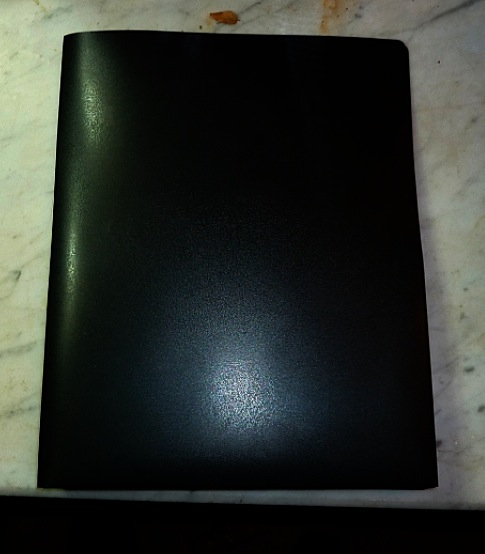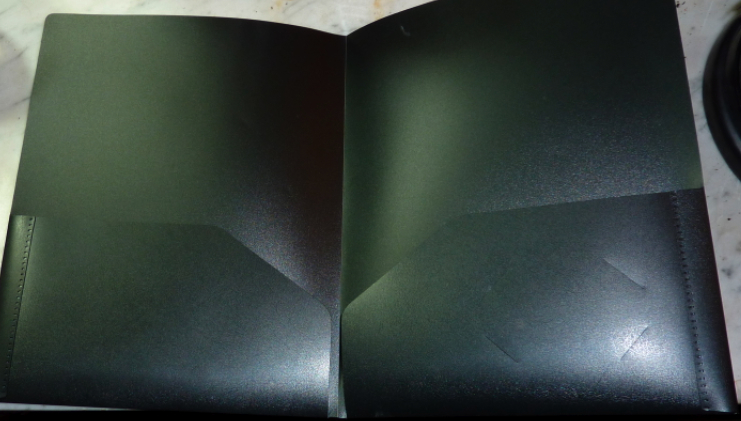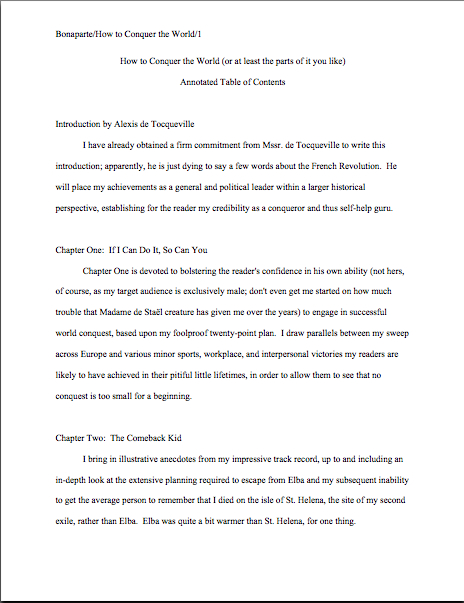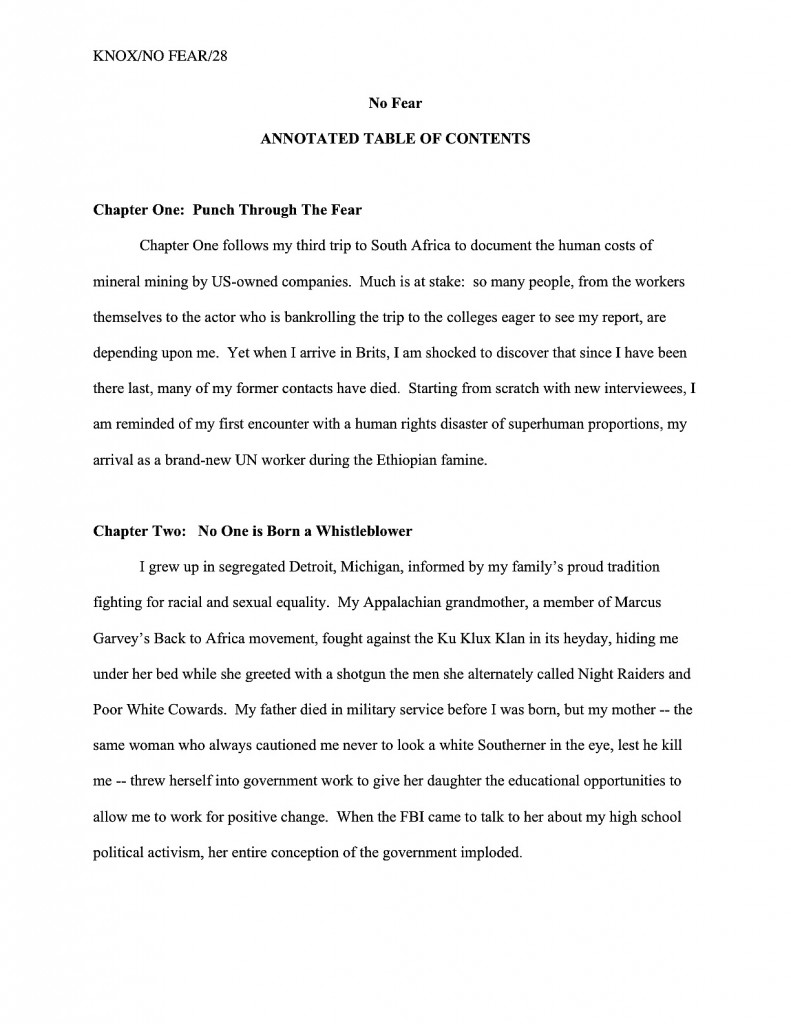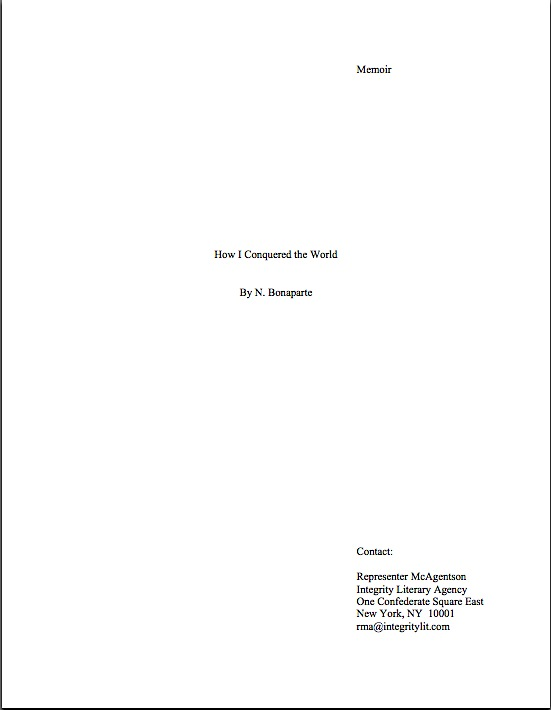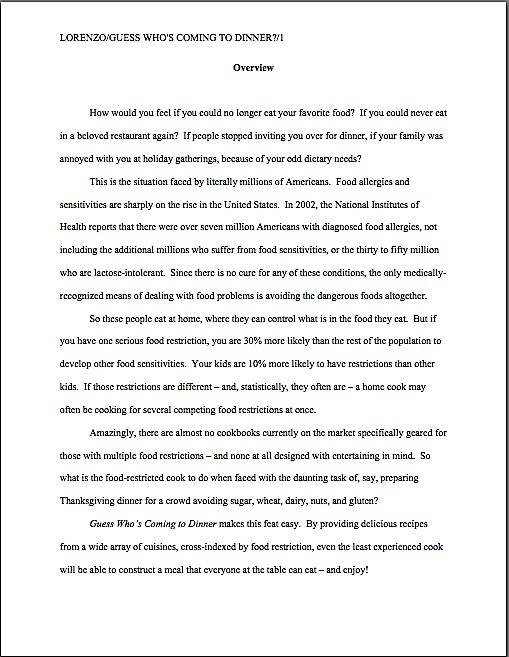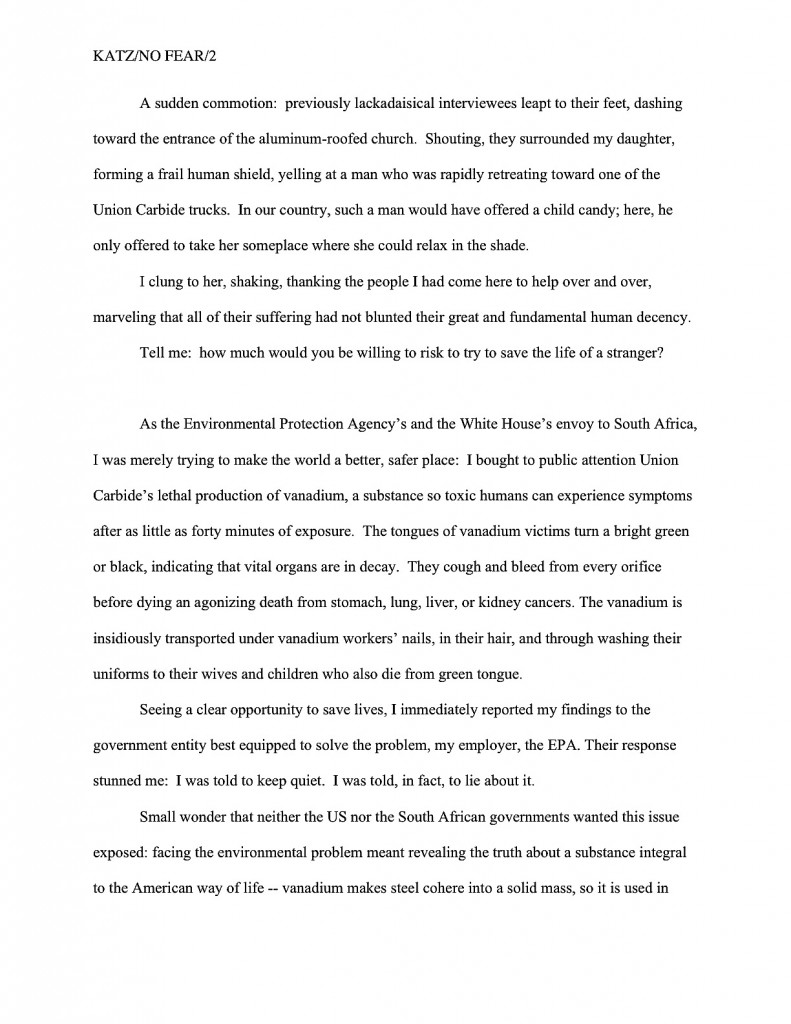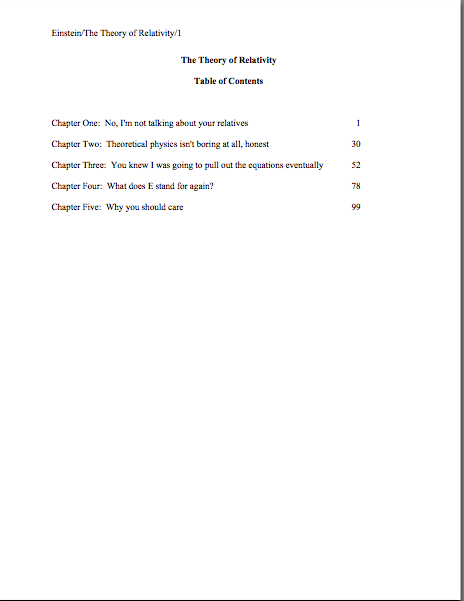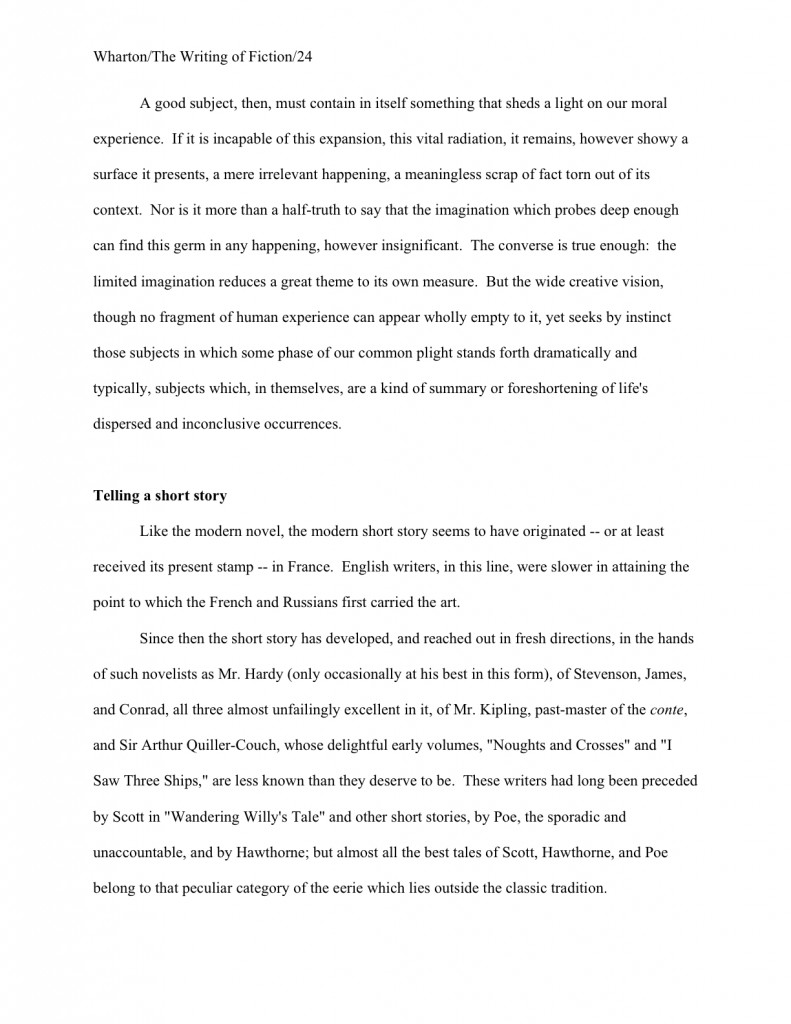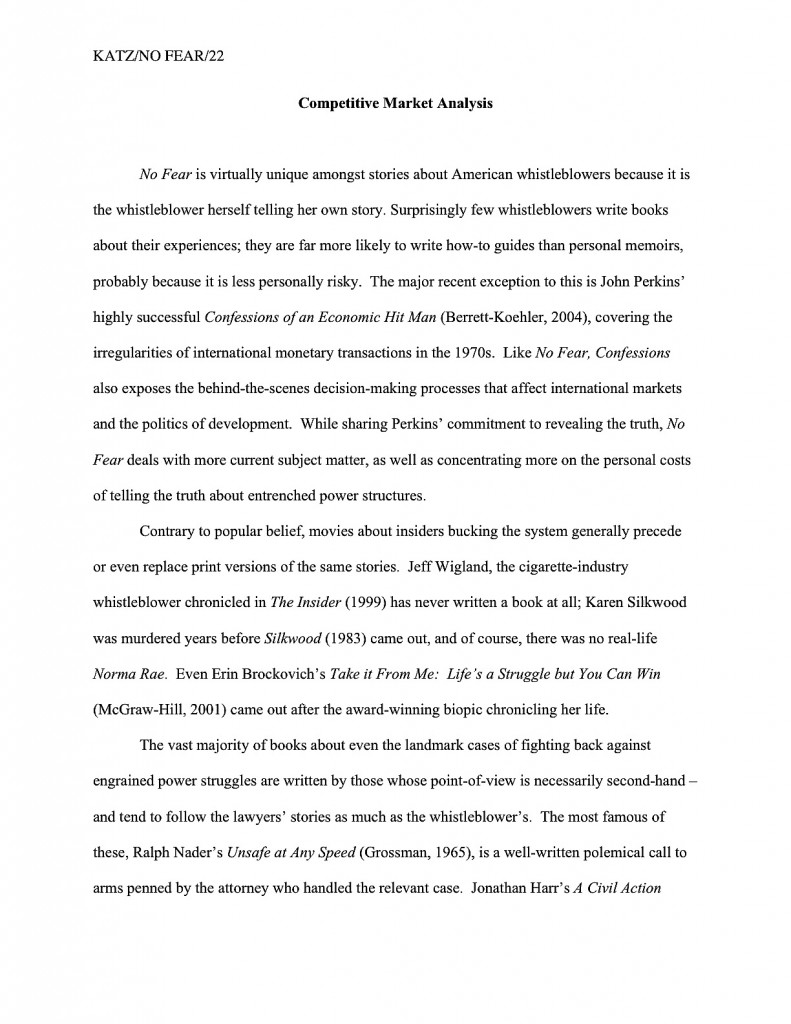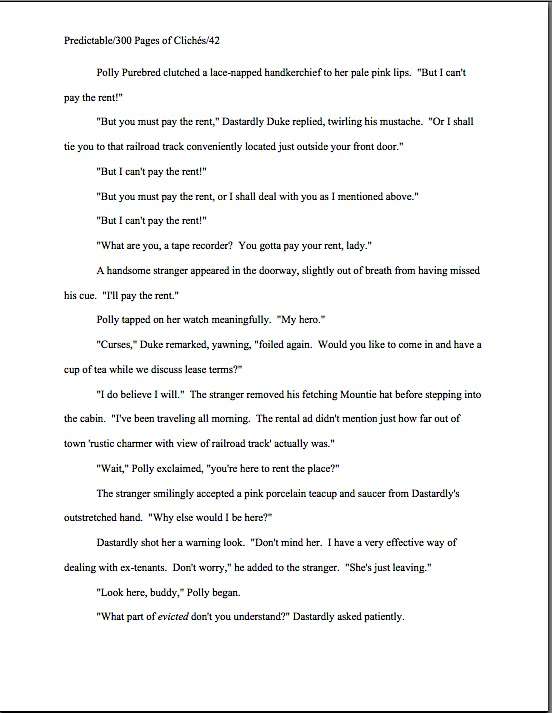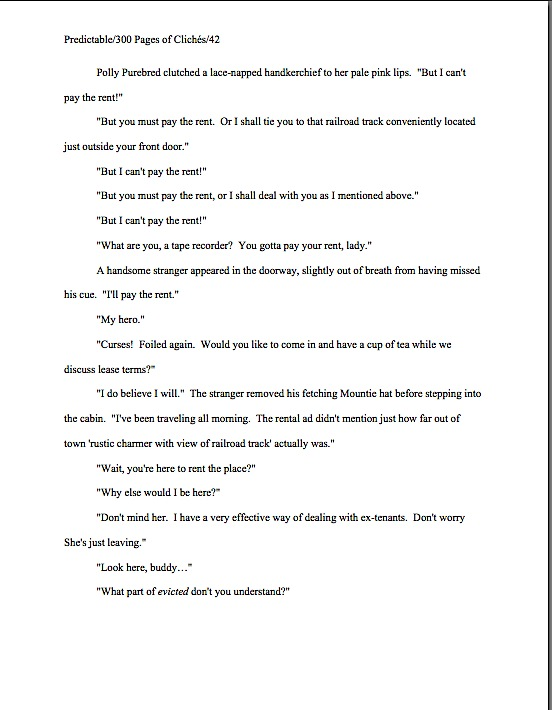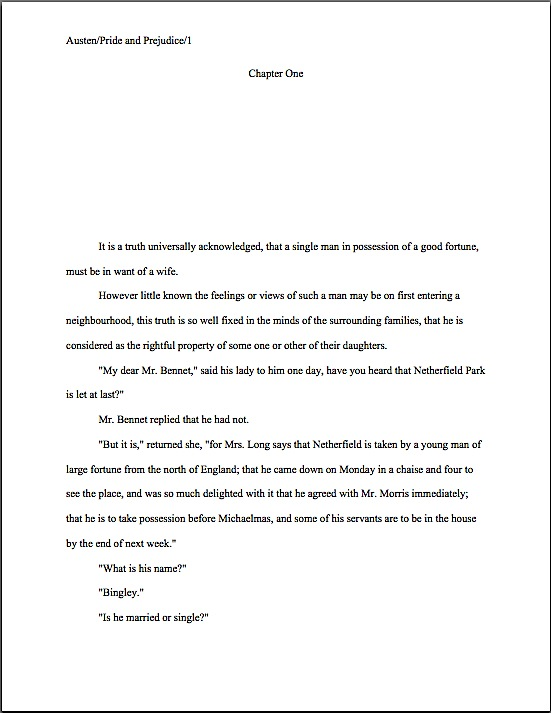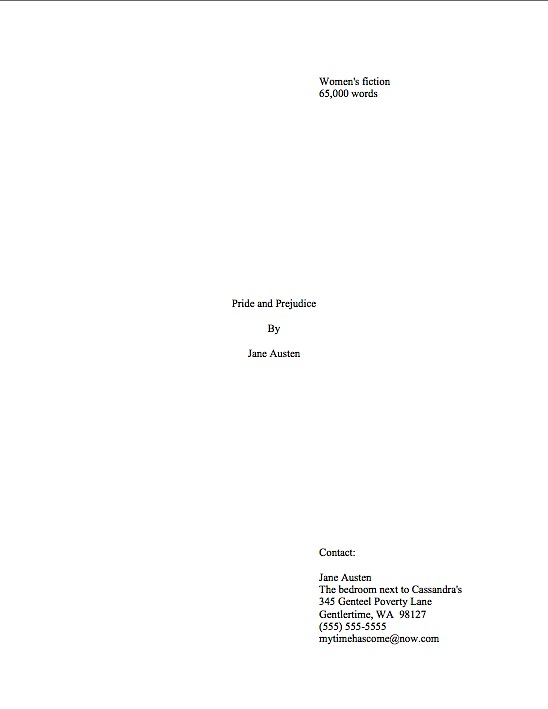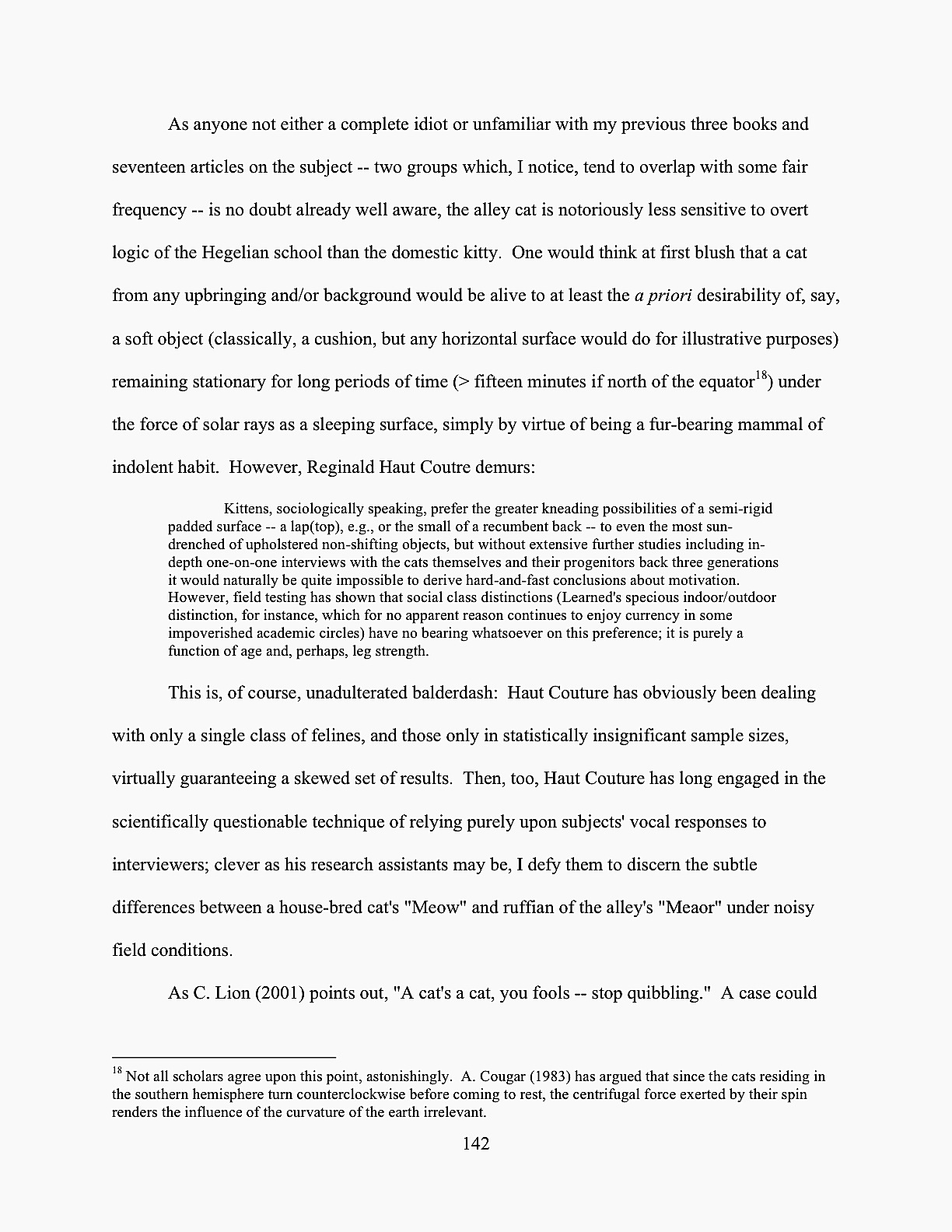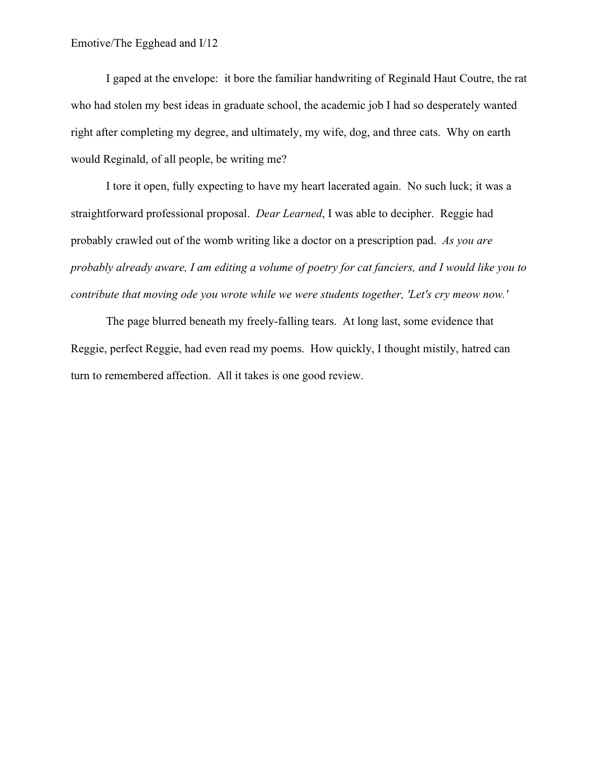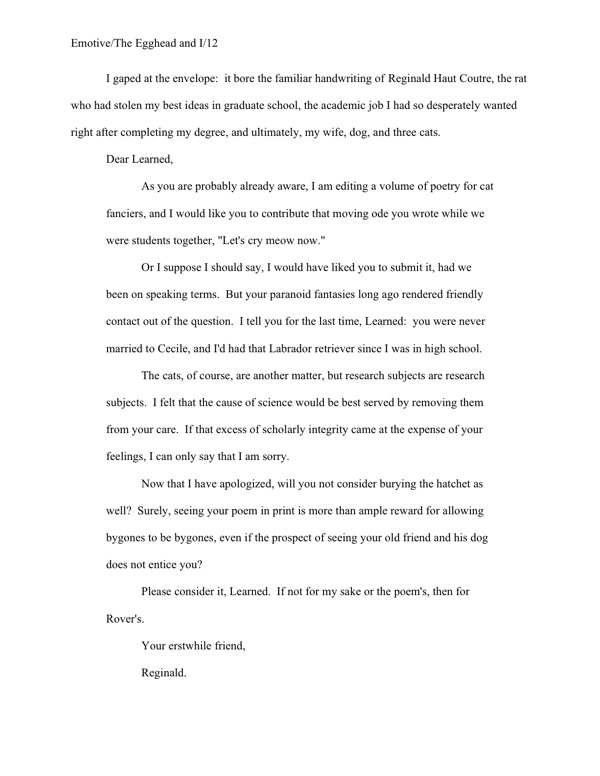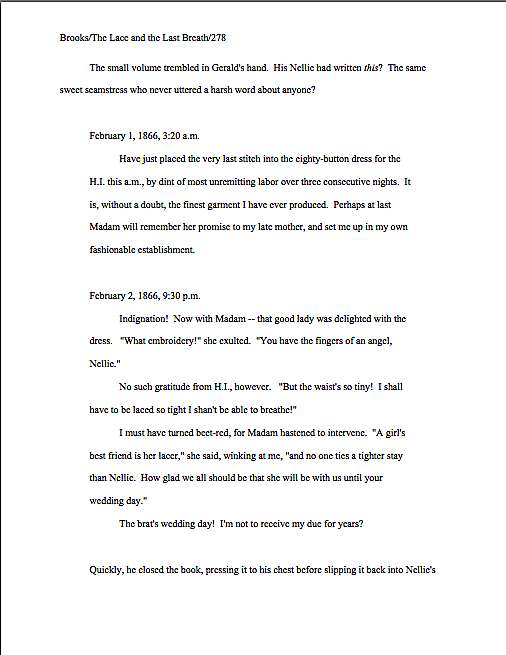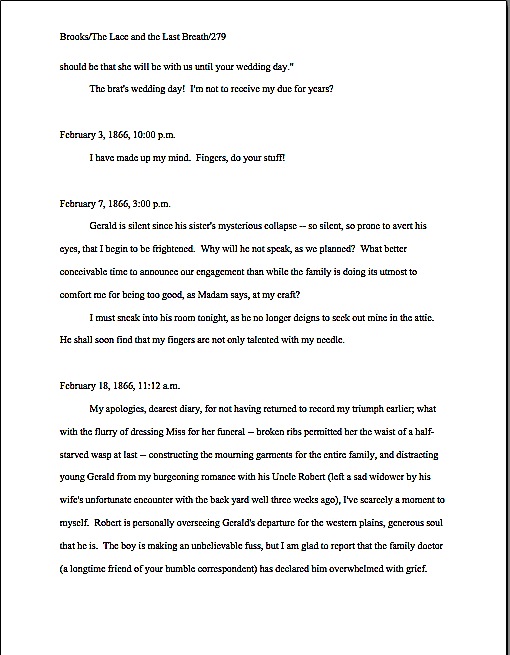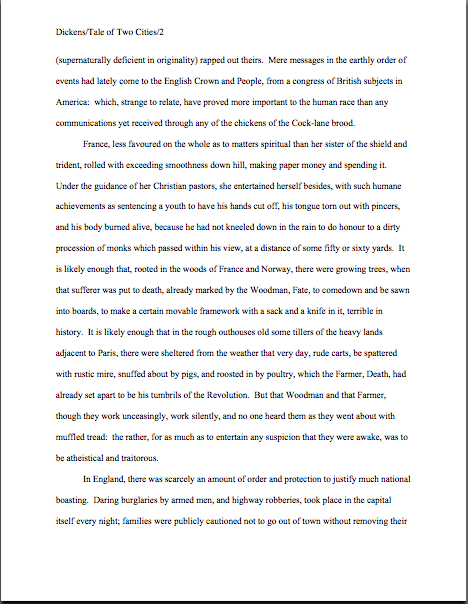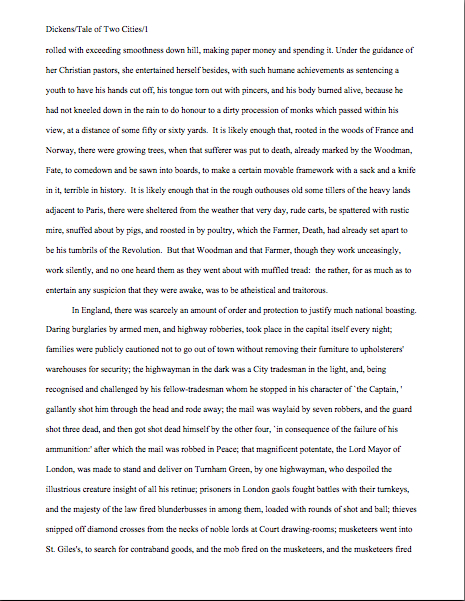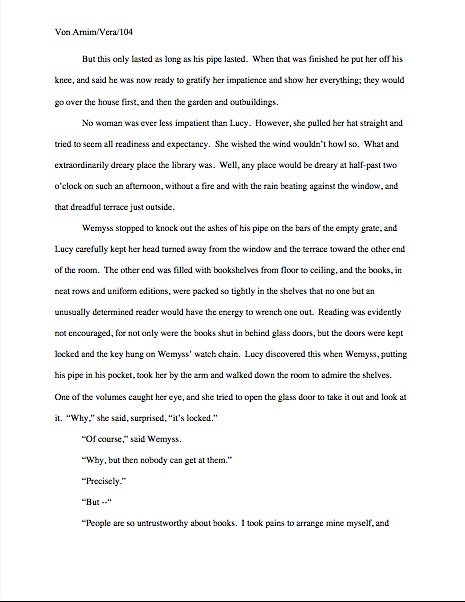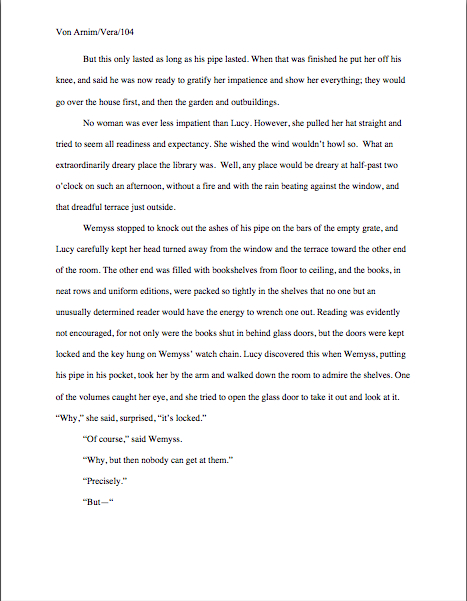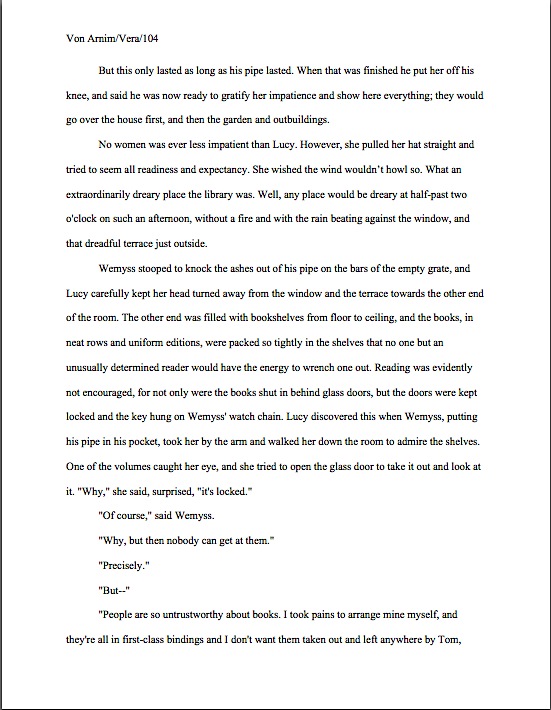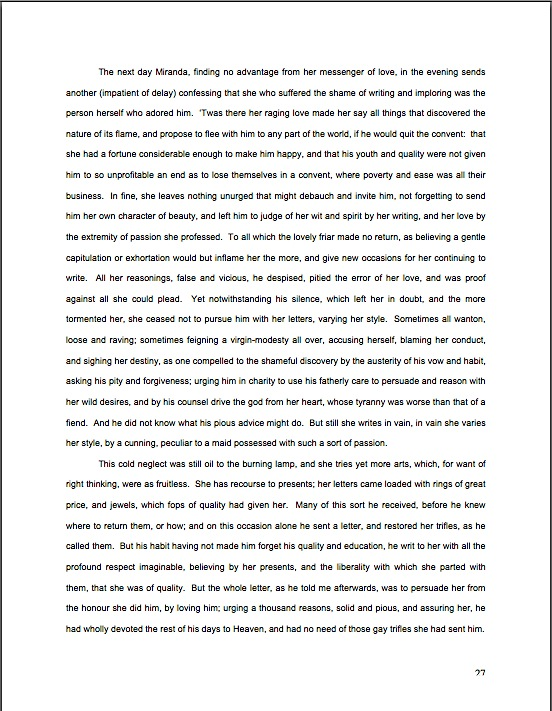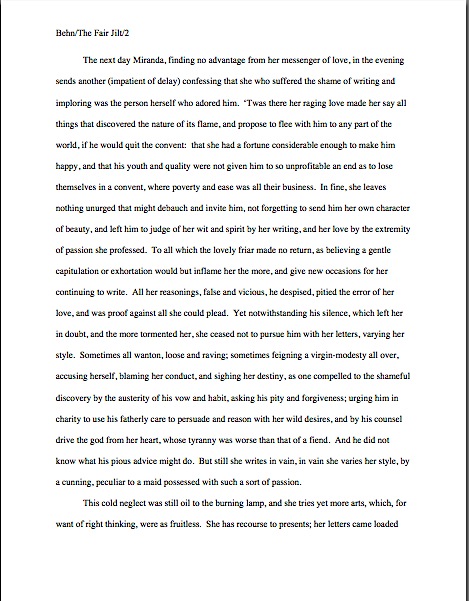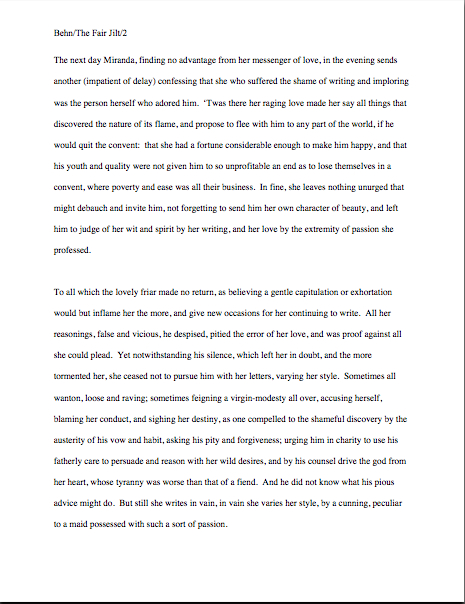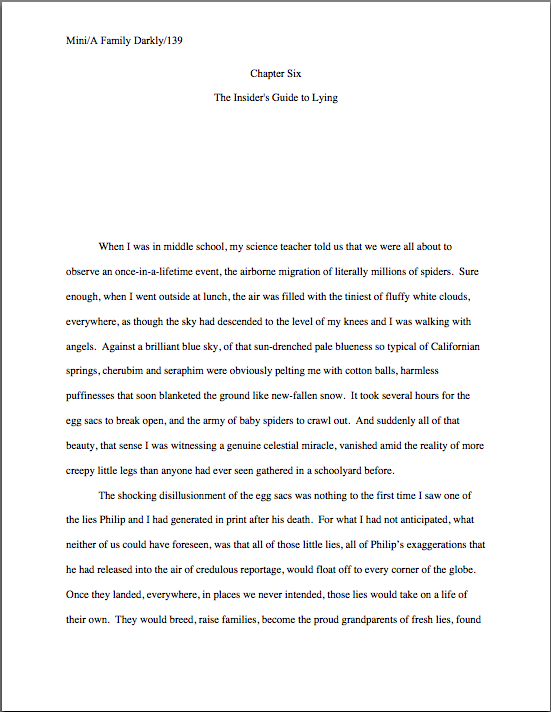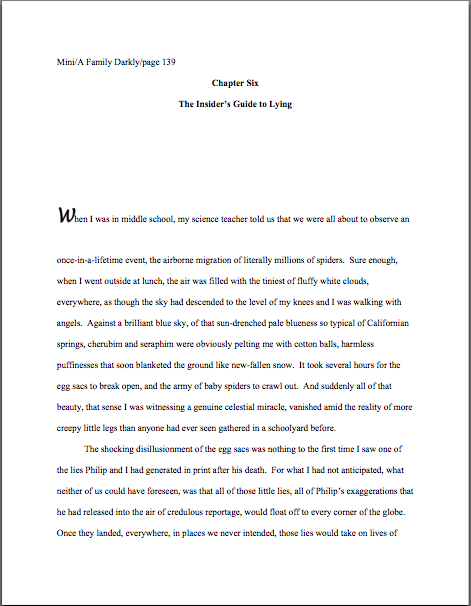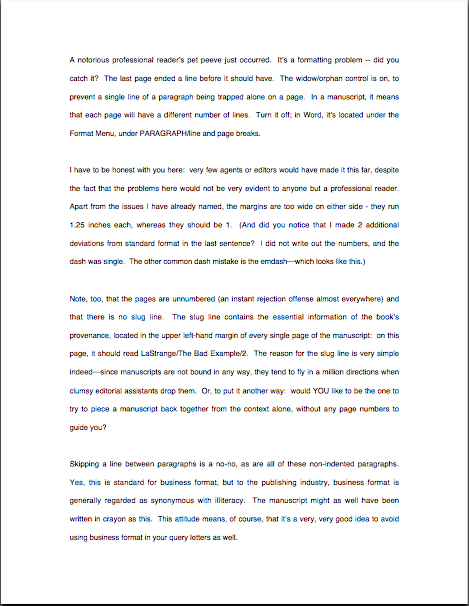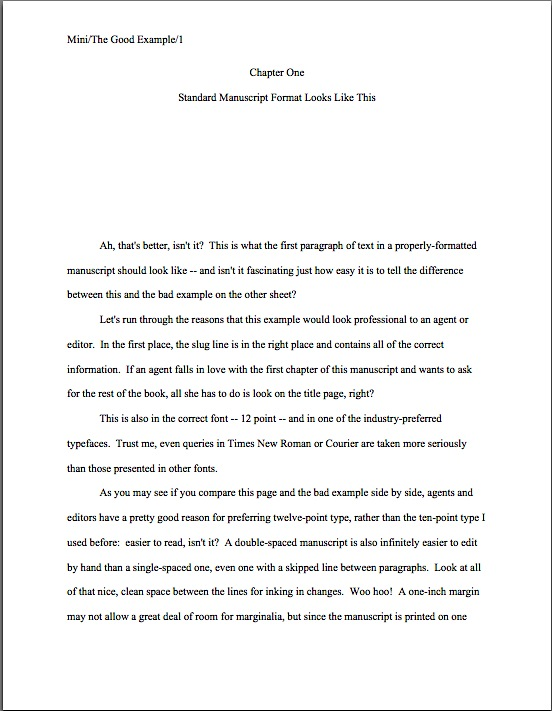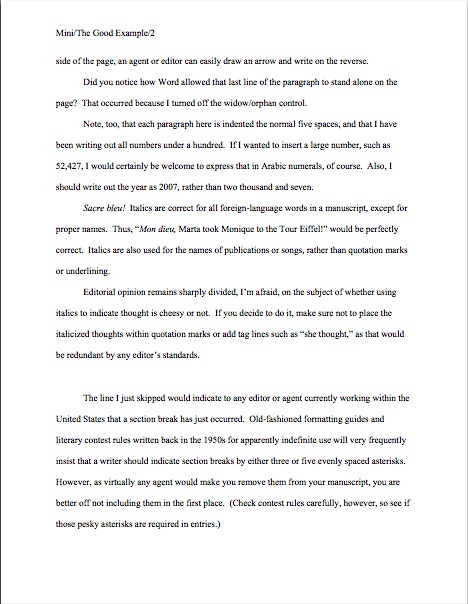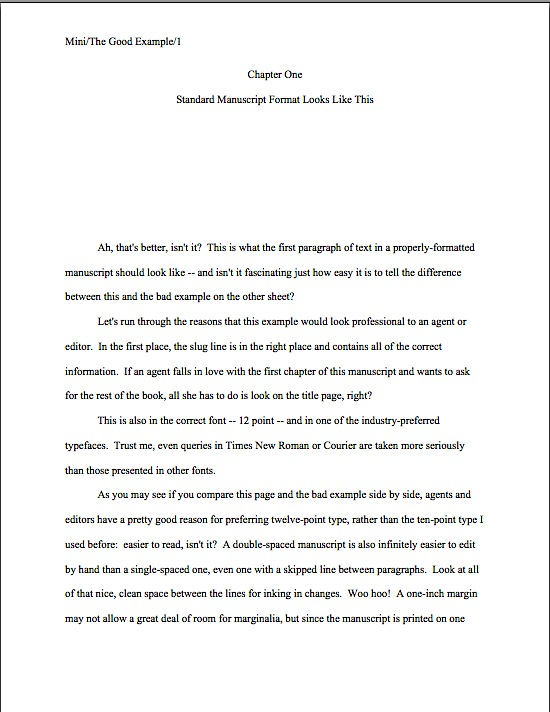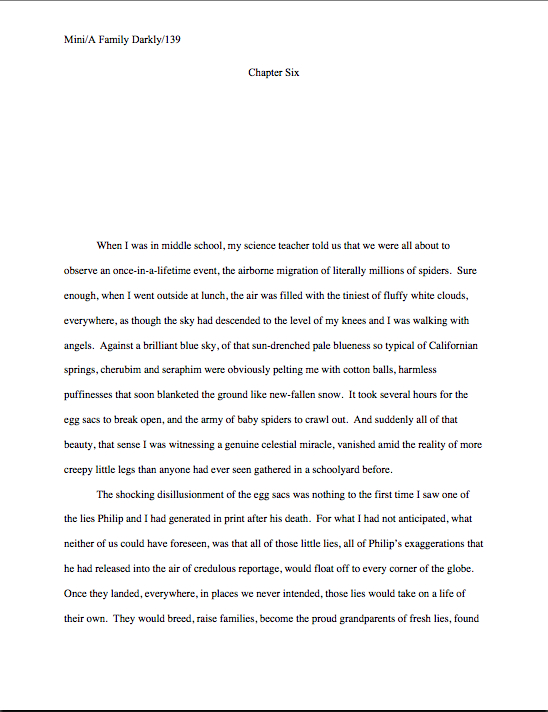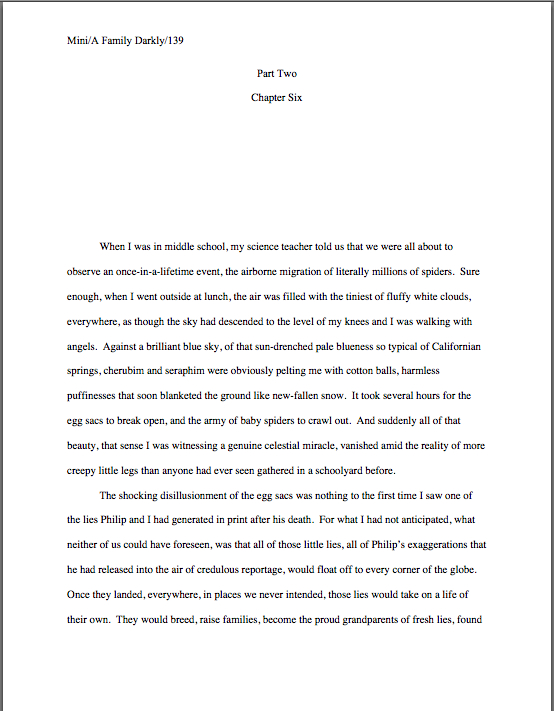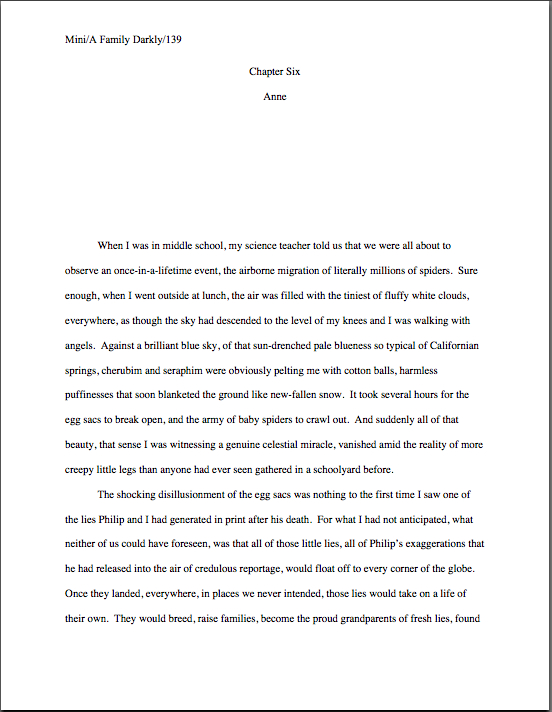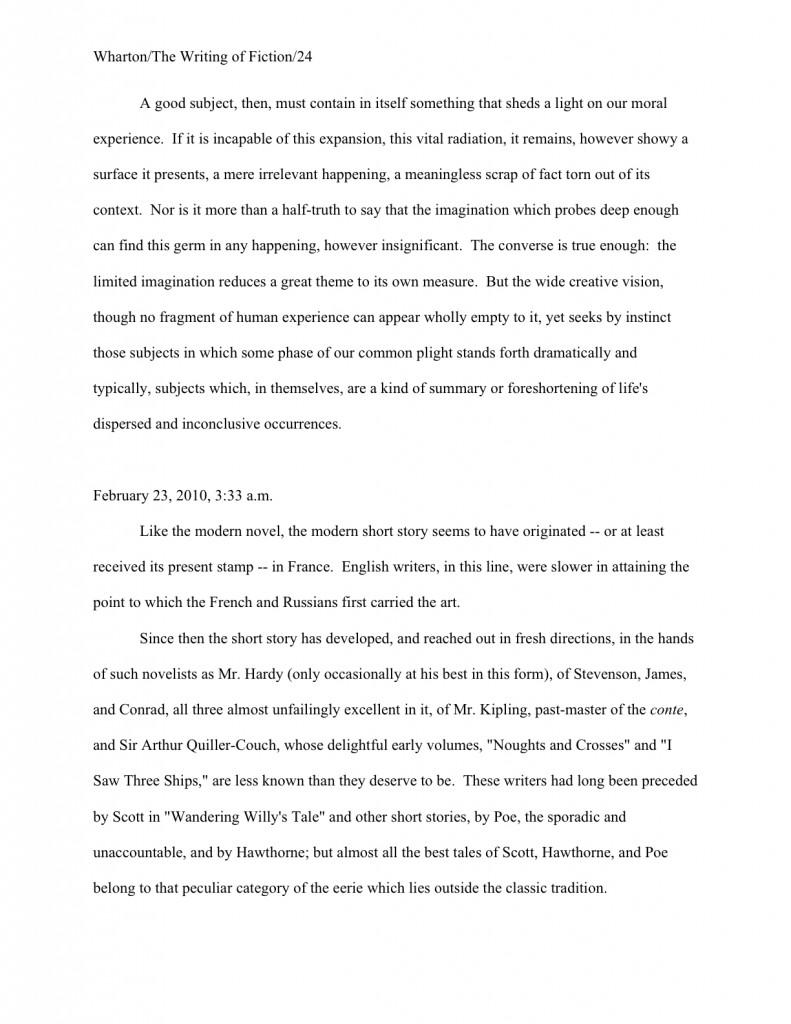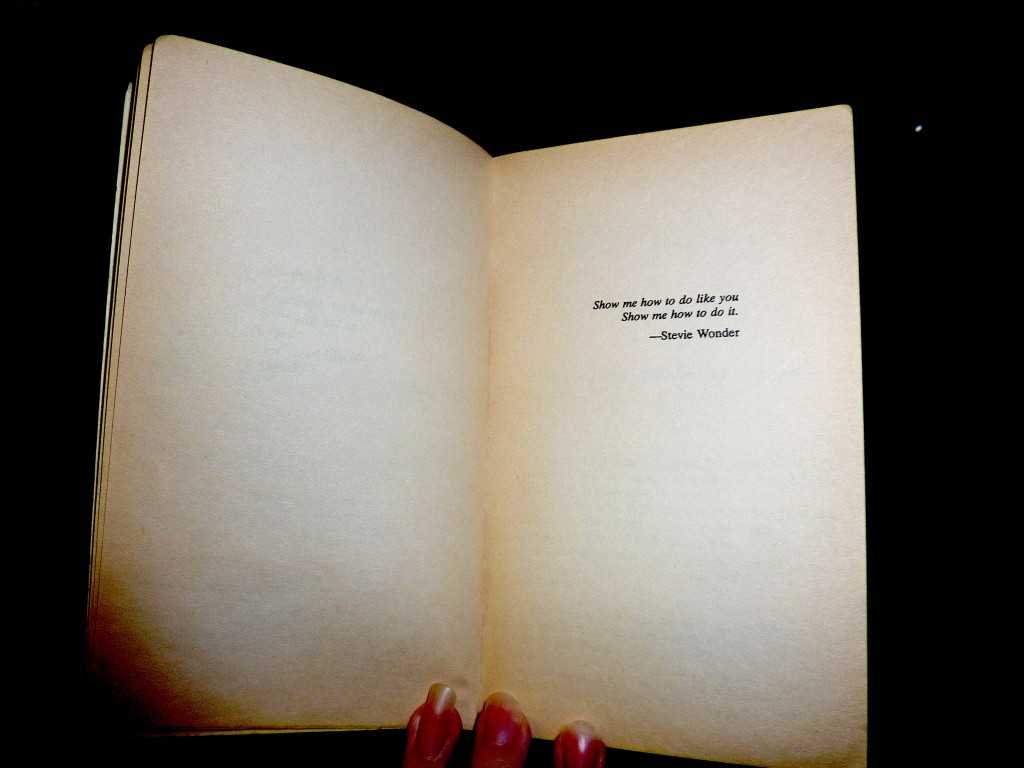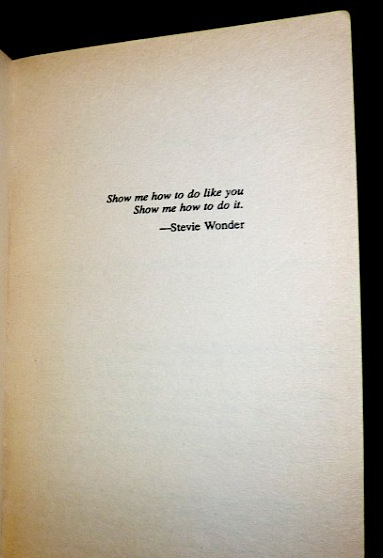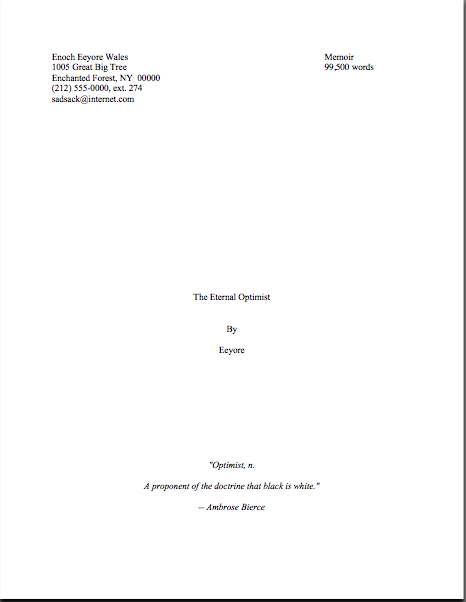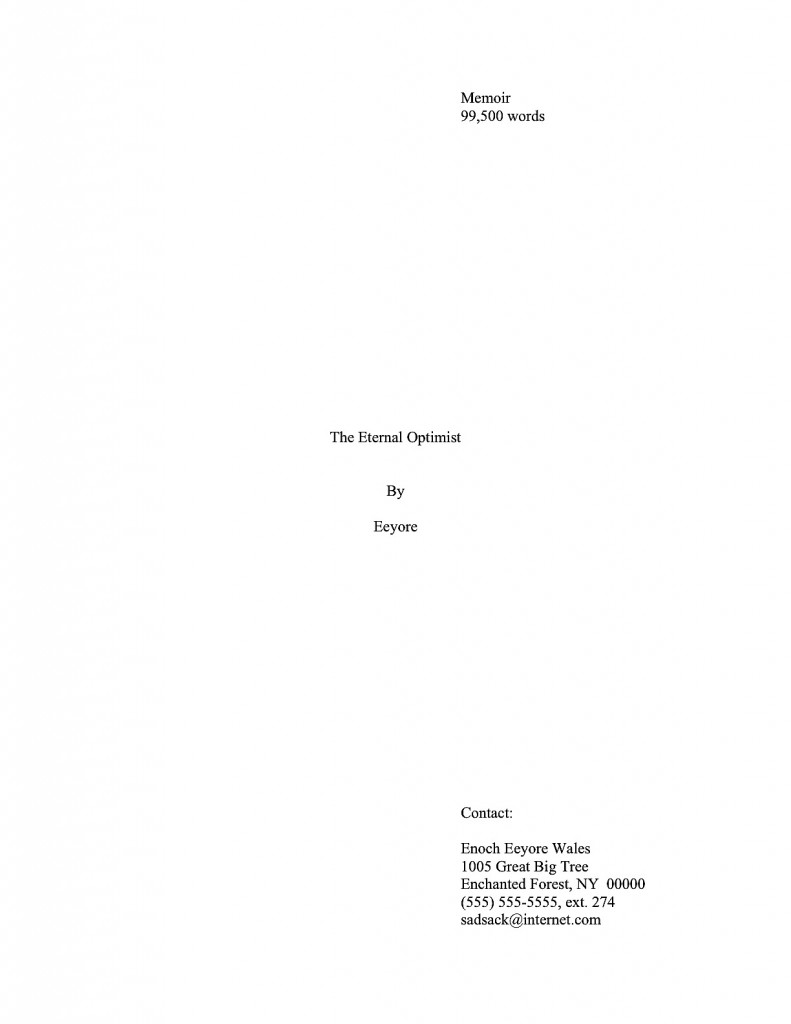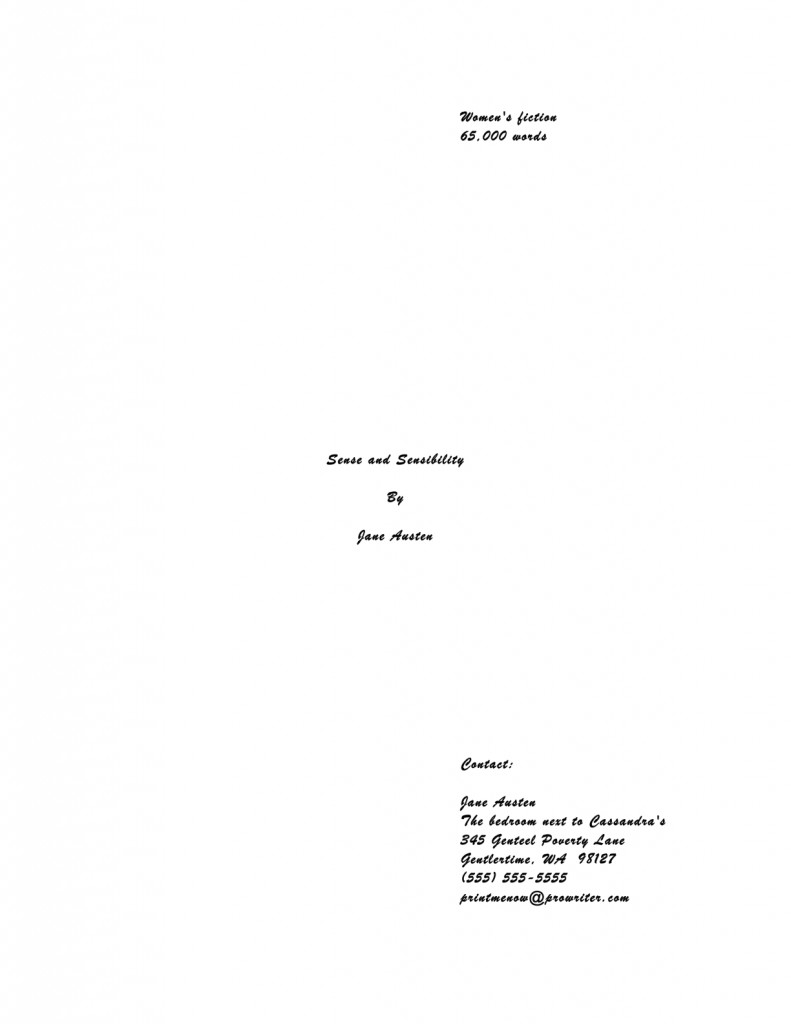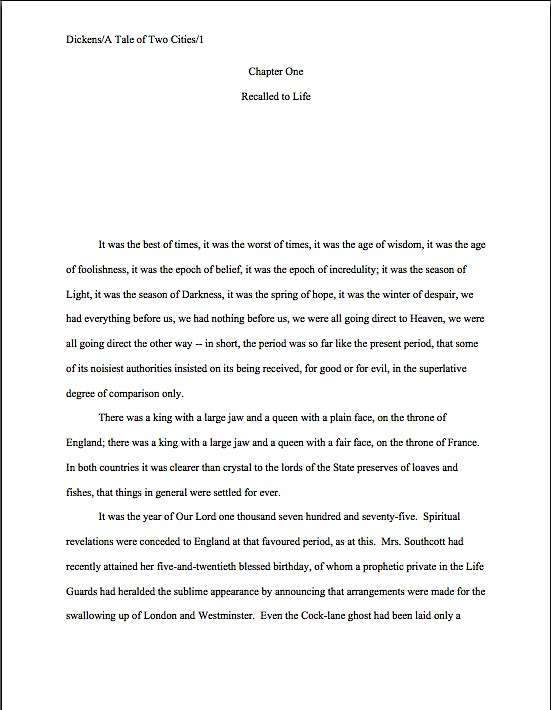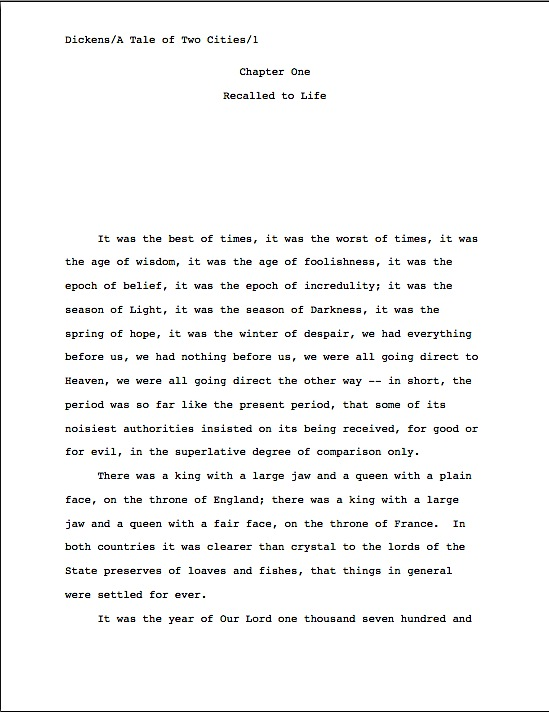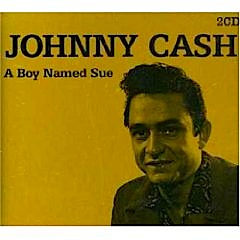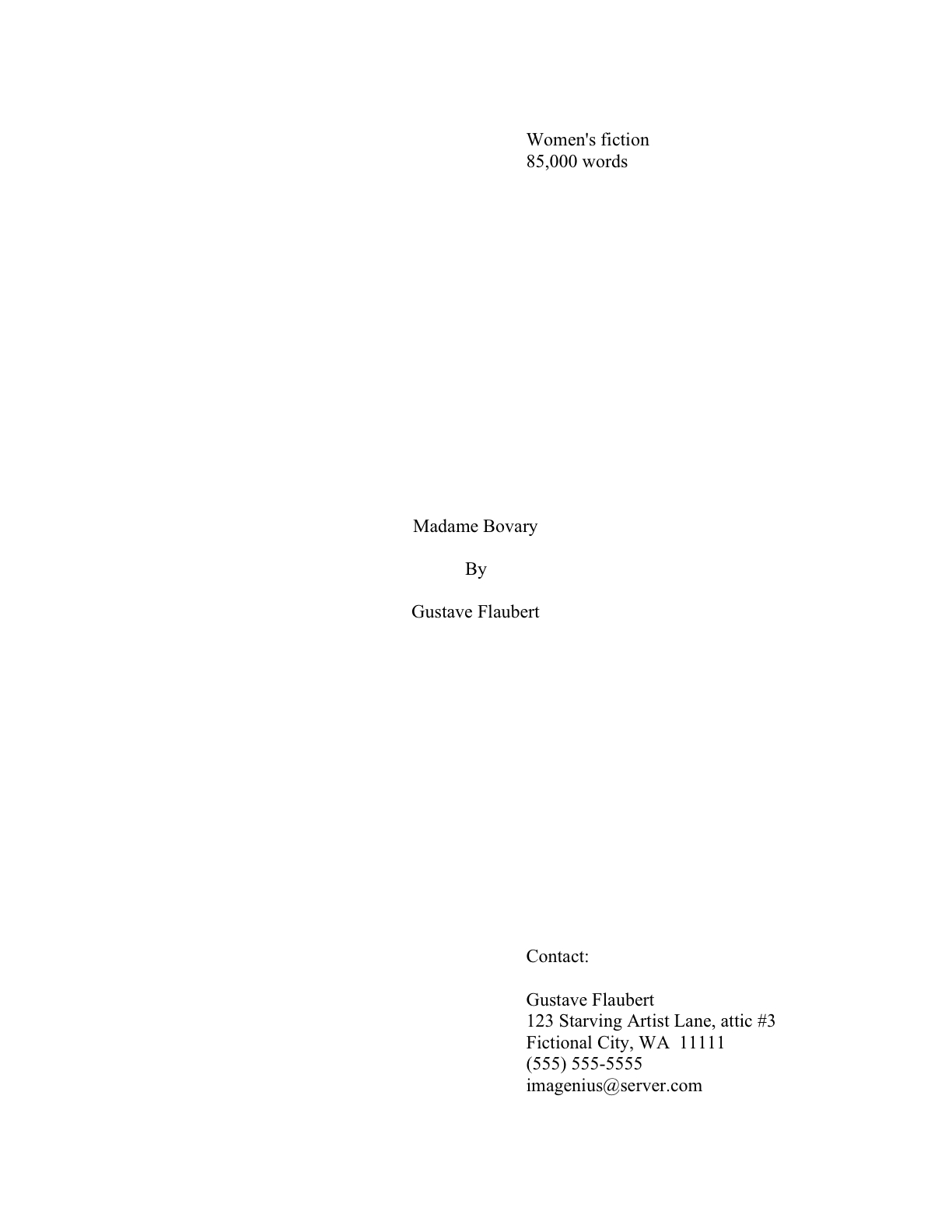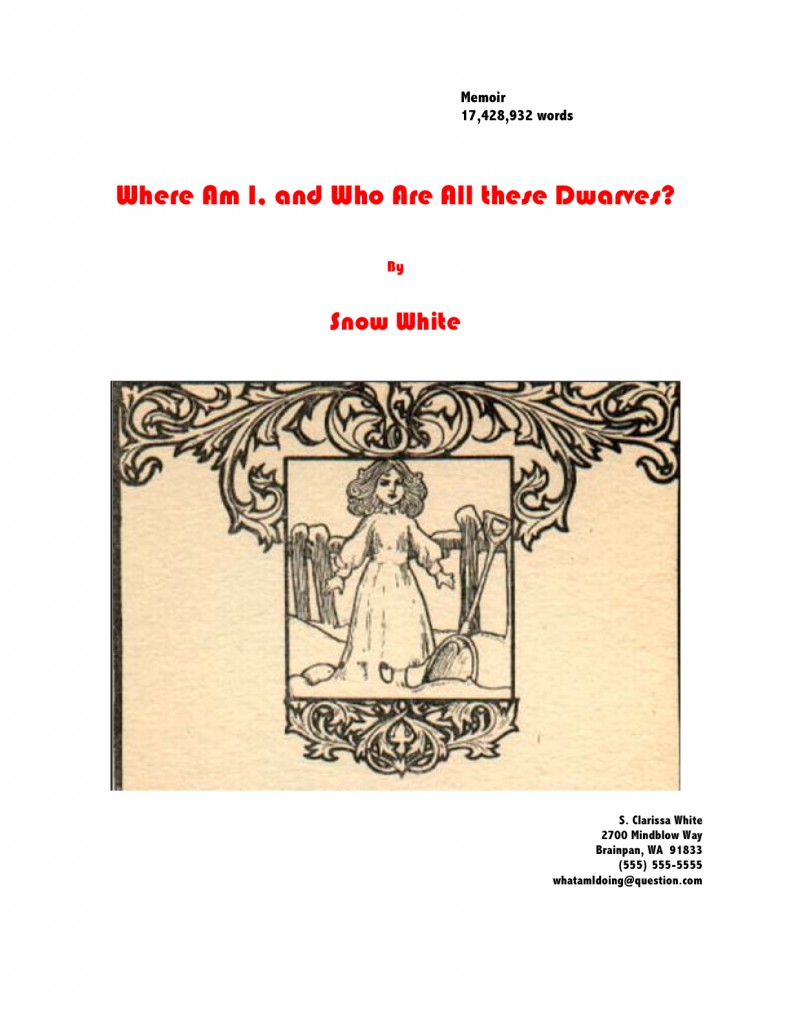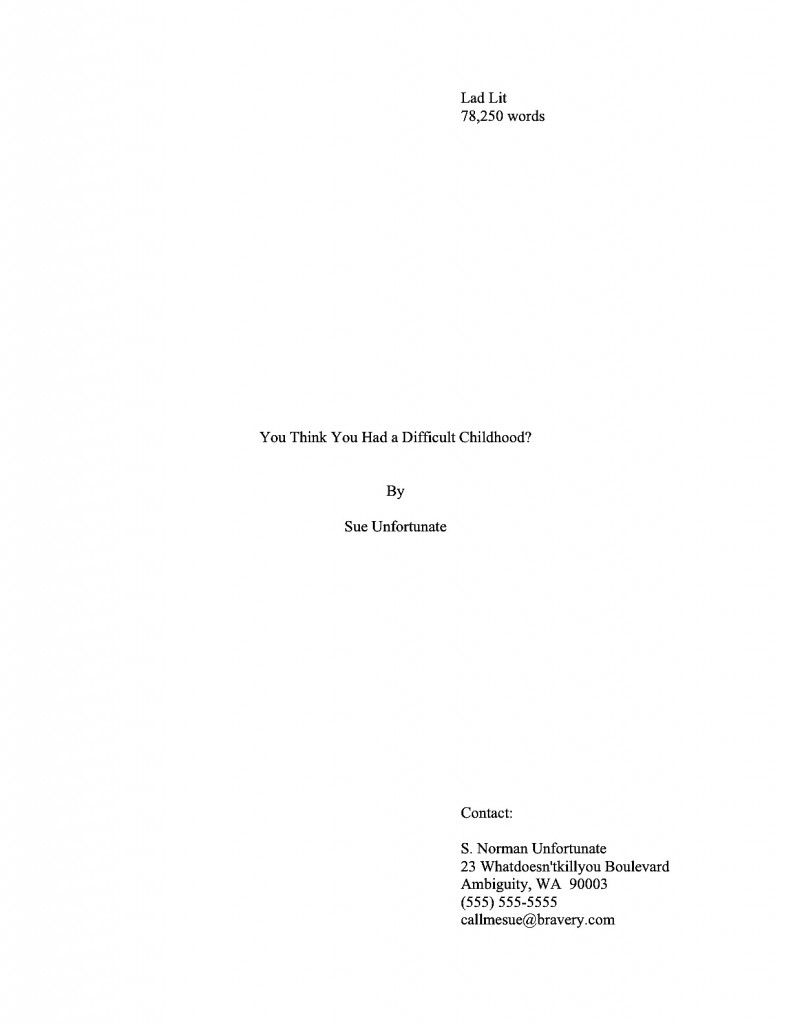“If only I hadn’t been so polite.” — S.T.C.
Long time no see, eh, campers? Honestly, I’m as surprised as you are: I keep arising each morning fully intending to post. The noon hour sees me already mentally composing practical examples. Hardly an afternoon goes by when I do not glance over at my computer nestled somewhere in the sub-basement of the muses’ palace of fine arts and think, “Okay, just a few minutiae to get through first, my pet, and we’ll be hard at work on that stirring entry on book promotion.” Or querying. Or Frankenstein manuscript-revising.
Then suddenly, it’s late evening, and the clever arguments and cunning demonstrations of applied craft I have been constructing in my head all day come tumbling to the ground. “Oh, that will take me hours to write up properly,” I murmur into my welcoming pillow. “Rather than write something hasty tonight, I’ll take it up tomorrow and zzzzzzz…”
At least, I think that’s what I’ve been murmuring. It’s kind of hard to remember the particulars in the morning.
“My God, Anne,” my learned mother says. “Who raised you? I certainly did not bring you up to go to sleep without jotting writing ideas on the notepad that’s never more than eight inches from your pillow.”
She has a point: she didn’t raise me to set at naught one of the cardinal rules of professional writing. One of the great tangible benefits of growing up in a family of writers and editors is knowing not to fall into the unfortunately common Oh, I’m sure I’ll remember the marvelous idea I have right now in the morning/when I get home/after I dash off this e-mail syndrome: I was trained from the cradle to have a writing implement and paper within tiny arms’ reach at all times, so I could jot down a few notes on that unforgettable idea just in case I forgot it.
Why sew extra pockets into a kid’s clothes for toting around wee notebooks and golf pencils? Because my hyper-literary parents wanted me to have a long and happy creative life, that’s why. As every professional writer in the world can attest to his or her sorrow, it’s never safe to assume that marvelous writing idea that the muses just dropped fully formed into your brainpan will not vanish into the ether within the next fifteen minutes.
Fortunately for the happiness of writers everywhere, few problems inherent to the life literary are as simple to solve as the lost great idea.
Step 1: write it down. Immediately.
Step 2: make sure you always have the means to carry out Step 1.
You needn’t buy a special notebook for the purpose — just get into the habit of carrying some paper and a writing implement in your pocket, purse, backpack, and/or pocket. Install same on your bedside table, in your car, in the pocket of that nasty uniform your inflexible and unimaginative boss makes you wear. (Honestly, does he think that patrons at his bar won’t at least suspect that the person mixing drinks is the bartender if she is not sporting a cheesy uniform?) From this moment forth, you should never be without it.
And I do mean never. If you are about to climb Mount Everest and do not have an extra few square inches for a pen, ask an experienced sherpa to help you repack. Clutch the lapels of the firefighter toting you off to safety until you are actually out of the building, but as soon as you are on non-smoking ground, grab the nearest envelope so you can scrawl a few notes on the back. Your deathbed should have pen and paper within easy reach.
And don’t tell me that you’ll get to it eventually — slip that notebook into your pocket now. Don’t make me bore you with that ghastly tale about Samuel Taylor Coleridge’s being interrupted by “a person on business from Porlock” while he was frantically trying to write Kubla Khan. While Coleridge apparently dined out on the story of how that untimely visitor made him forget the rest of the poem he’d already written in his mind, in my family, there was only one verdict about whose fault the loss was.
“He never should have answered the door,” my father would say.
“Not before jotting down a few notes,” my mother would agree.
Small comfort to Coleridge and every other writer who seen a good idea vanish in the face of the demands of quotidian life, naturally, but you’d be surprised at how little sympathy the lost great idea garners among professionals. “Well, why didn’t you write it down?” they will ask the writer, apparently oblivious to the fact she is valiantly choking back tears. “Didn’t you ever hear the story about Coleridge and Kubla Khan?”
Even if you have to grab a passing waiter’s pen from his apron to scrawl a few pertinent words on your hand or shirtsleeve, it honestly is in your best interest — and your next book’s — to get into the salutary habit of writing every fresh idea down right away. Which leads me to the lesser-known third portion of the cardinal rule:
Step 3: accept that performing (1) as often as you should will occasionally bring unfortunate social consequences.
You didn’t think that write down good ideas the instant they occur to you applied only to moments when you happened to be alone, did you? One never knows where inspiration will strike: amazing book ideas have been known to manifest in locales as inconvenient for note-taking as the shower, in the basket of a hot air balloon, on a Tilt-a-Whirl, and at dinners at the White House.
The muses can be most demanding mistresses. Heck, the premise of my last novel came to me while I was floating in an open-air hot tub nestled into the side of a mountain in the Oregon Cascades. I had to hop barefoot past a patch of poison oak to get to my ever-present pen and paper, and you don’t see me complaining.
Actually, once a writer becomes accustomed to noting every good idea for future use, she’s less likely to complain about it than those with whom she elects to spend her time. To that end, you also might want to train your kith and kin to hold their thoughts (and tongues) if — make that when — a brilliant idea strikes you.
Oh, you want, “Just hold off on carving that Thanksgiving turkey for a moment, Uncle Walter, while I write myself some notes,” to be the first your loved ones hear of your new-found good habit? Do you have any idea how many references to Kubla Khan it’s going to take to render that little surprise socially acceptable?
I sense half of you cringing at the very idea of stopping a conversation, dinner, or other things I will leave to your imagination if you are over the age of consent (you’ll understand when you’re older, Timmy) with a blithe, “Oh, excuse me, but Anne Mini says that if I intend to write for a living, I need to get this idea down at least in note form right away. Please feel free to continue without me.” I can understand where it might seem a trifle rude to the uninitiated.
But that’s precisely the point: it comes across as far more impolite to someone who doesn’t already know that serious writers do this. Frequently. It’s how the creative brain works: bursts of inspiration are part of our standard equipment. And the more seriously you take those inspirations, the more active your idea-generator will become.
It’s far, far better if you explain this to your kith and kin before the muses bop you over the head in the middle of that Broadway musical your partner has been dying to see for six months. Trust me on this one; it may seem counterintuitive, but it’s actually kinder that way. The sooner they get used to the idea that befriending a serious writer necessarily entails waiting in more or less supportive silence while you furiously scribble notes on the paper tablecloth in a crowded restaurant, the happier you — and they — will be once you are writing professionally.
Think of it as training for working with an agent or publishing house. Honestly — and I speak from experience here — “Hey, honey, the brand-new editor my publisher has just hired has asked me to come up with a new ending for my novel, pronto, so I’m not going to be able to pay the slightest attention for the next three weeks, okay?” will go over much better if Honey has already accustomed him- or herself to the reality that creativity is often rather inconsiderate about when it strikes.
So, as it happens, are deadlines. Just as there is no convenient time to sprain one’s ankle — again, I speak from experience — there is no really terrific time for a last-minute or rush revision request. Sorry about that.
I’m also sorry about this: no matter when it happens, it’s going to be hard on your loved ones, necessarily. But being the writer too nice to say to those loved ones now, “Look, I cherish our time together, but my writing is important enough that occasionally I will stop dead in the middle of an anecdote to make a note about a scene I want to write later,” is almost invariably equally reluctant to say in a nice, reasonable tone, “Remember how happy you were when I landed that agent? Well, this is the direct result: I need to spend this weekend making the revisions she’s requested,” or even, “Here, take twenty bucks from my rather paltry advance and go to a movie so I may honor the acquiring editor’s demand that I change my protagonist’s best friend’s name from Jolene to Joanne all 300 times it appears in my novel.”
Whenever you do it, it’s going to take some guts. I’m merely suggesting that if your kith and kin are already acclimated to your taking ten minutes out of lunch to scribble feverishly on the back of a menu, they’re less likely to find it unacceptable when you whip out a notebook in the third hour of Cousin Marvin’s testimonial dinner or in the course of the eighth inning of a particularly eventful baseball game. And at least they’ll have some inkling of why your work is important enough to you to cancel that long-planned trip to Disneyland because your editor abruptly got laid off and the new one just hates the chapter about the trip to Disneyland in your book.
Darn. It was going to be tax-deductible as a research expense, too.
Yes, yes, I know: writers tend to be conflict-avoiders. Try to think of getting them used to your ignoring them for two minutes in the middle of a movie as an inoculation — if they have already been exposed to the minor inconvenience, they won’t be made as sick at the onslaught of the major one. Don’t expect them to be thrilled about it, however; just expect them to cope. They’re never going to be thrilled if you spend most of your family reunion in the hotel room, fleshing out that fascinating conflict you’ve just dreamed up between your antagonist and the love interest’s second cousin, but at least it won’t seem out of character.
“Oh, that’s just Mavis,” your significant other/children/long-suffering parent will sigh. “We never know when the muses are going to kidnap her next.”
I would also recommend getting into the excellent habit of keeping a pad of paper by your computer while you are writing and revising, to jot down any inspirations that, while they might not be applicable to the page on your screen, might provide a piquant addition or necessary change to another part of the book. Taking the time to scrawl Did Arlo have a cocker spaniel prior to Chapter 4? on a scrap of paper now can save you the acute embarrassment of realizing that you’ve just sent the agent of your dreams a manuscript in which the dog’s breed is different in Chapters 2, 8, and 17 than it is in Chapter 1.
That’s particularly important if there happens to be more than one dog in the book, of course. “Wait,” Millicent the agency screener exclaims over page 47. “Is Marley the great Dane from page 2, or the Pekinese from Chapter 3? Or is it not a dog at all, but merely a reference to Ebenezer Scrooge’s late partner?”
Yes, readers who have been giggling for the past couple of paragraphs? “Oh, dear Anne,” the gigglers sigh. “You are such a Luddite. In the situation you just described, I would be working on my computer. Surely, that would obviate the need for rifling through the nearest wastepaper basket for a stray envelope. If I want to take notes, I’ll just open a new document and type them.”
I believe that you will, oh gigglers, but frankly, most writers caught up in the throes of one scene wouldn’t pause that long to type up an idea about another while it’s fresh in their minds. They would — sacre bleu! — just assume that they’d still remember that great notion by the time they had finished the current scene.
Think they will? Why take the chance? Jotting a quick note on a stray scrap of paper will take only a few seconds.
The other advantage of recording that idea on paper, rather than on one’s computer, Blackberry, or even in a recording device is that one can leave it sitting next to one’s computer, Blackberry, or recording device, all ready to remind one about that great notion. If you’re like me — and I suspect most writers are, at least in this respect — the very laws of inertia dictate that note written today will still be lying there a month hence, when you have time to get back to the scene you intended to write.
Oh, you tidy up your writing space every day? My good pile is almost as tall as the container holding the pens I used to write them.
If that same idea is memorialized electronically, by contrast, you have to remember to reopen that file or listen to that recording. Unless you are in the habit of regularly reviewing your computer files, that may not happen before you finish your current draft. You might not even stumble across it again — avert your eyes, children; this is going to be ugly — before you pop the completed draft in the mail to the agent of your dreams.
Isn’t taking a minute to write a note now preferable to bearding the heavens with your bootless cries of, “But I meant to go back and change the dog’s name from Marley to Charley prior to page 150!” later on?
The same principle applies, as I hope all of my regular readers are aware, to remembering technical questions that might arise during the writing or revision processes. Although a few intrepid souls might instantly close their Word programs and fly to this site (or a similar one, or ask a trusted writer friend) within a few seconds after running into an intractable problem, my impression is that most don’t.
And finally, I have managed to build a segue to the topic I had planned to discuss today! I wasn’t kidding about how easy it is to get sidetracked.
One of the many stacks currently threatening to topple over onto my mousing hand holds my To Blog Upon list. While the inspirations there range from the hyper-serious (one note reads blog about the desirability of an unpublished writer’s designating a literary executor in her will) to the practical (how long has it been since I discussed juggling offers from multiple agents?) to the completely frivolous (been overusing dog examples lately — switch to wombats?), many of the most intriguing ideas in this stack are print-outs (on the back sides of already-revised early drafts of my work, of course; reusing is as valuable as recycling) of questions readers have the comments.
(Note to self: all of those parentheses and italics are eye-distracting on the screen. Also, isn’t 93 words too long for a single sentence?)
I reserve a special stack — yes, my desk is precisely as cluttered as you are picturing it to be — for questions that are perfectly logical as follow-ups to formatting or craft issues, but wouldn’t necessarily occur to a professional reader as something that might be puzzling to those who have never seen a professional manuscript in person. When one stares at those pages for a living, one develops an almost visceral sense of what does and does not belong on the page. But how is someone new to the game to develop that sense?
Incisive and thoughtful reader Karin, for instance, raised a marvelous issue that I had overlooked in my Formatpalooza posts on section breaks. (Which were three: a post on the rules governing them, a post containing visual examples, and a post showing section breaks in a book proposal.) Even better, she was polite and charming as she brought it up.
I’ve been reading your blog for quite some time now and find your advice very clear and extremely thorough; thank you for the hours of work you put in trying to help us blind writers see the light of proper formatting and querying.
I have to admit, combing through pages of formatting advice, I may have missed the answer to my question, which, while small, addresses a concern I have on the fifth page of my manuscript, having to do with section breaks. Having turned off widow/orphan control and inserted a space between sections, I find that one section ends on the bottom of a page, which means the beginning of the next section starts after a blank line on the next page. Will professional eyes notice the blank line as a section break, or will it appear sloppy?
As you know, we all get very insecure wondering if these things spell doom for our publishing chances. If you have time, could you please put my fears to rest? Thank you very much!
As my To Blog Upon stack can attest, I get a lot of questions about section breaks. Partially, that seems to be due to the surprisingly pervasive practice among self-styled experts not to differentiate between what is proper to indicate a section break in a book manuscript or proposal (a skipped double-spaced line) and what is appropriate for a short story or article (#).
So before I address Karin’s specific concern, let’s see a properly-formatted section break in action in mid-page. A transition between two scenes in one of H.G. Wells’ social novels will do the trick nicely:
The image came out a trifle on the blurry side — my apologies about that — but the section break is quite clear, is it not? No bells, no whistles: just a skipped line between scenes.
While you have that fuzzy image firmly in mind, let’s take a gander at another rule of standard format that often puzzles those new to the game. Had ol’ H.G. (or whoever is doing his word processing these days) not followed Karin’s example and turned off the widow/orphan control in Word, this page would have had a too-large bottom margin. Like so:
See the problem? This page has fewer lines on it than the previous example, because Word did not want to leave the first line of the final paragraph behind on page 158 when the rest of the paragraph was on page 159.
Millicent, however, like the rest of us who read manuscripts for a living, prefers each page to feature the same number of lines of text. Otherwise, it would be impossible to estimate word count, right?
Including a section break does not run afoul of that preference: in theory, there are the same number of lines per page; the empty space is holding the place of a line of text. Because our Millie knows that a skipped line of text means a section break, she understands that.
But what if the last line of a scene ended on the next-to-last line of the page? The result would be the same number of lines on page 158 as if the widow/orphan control had axed the last line. The next section would begin on the first line of page 159.
Clear enough what’s going on, is it not? Since the subsequent scene would follow on the top line of the next page, Millicent would know that what she has just seen is not a formatting gaffe, but a transition between two separate sections of text.
But what if, as Karin feared, the first scene had ended on the last line of page 158? Should we take her suggestion of pushing the section-differentiating skipped line to the top of page 159? Let’s see what that would look like in practice, shall we?
Looks a trifle silly, doesn’t it? To Millicent’s eyes, it would look like something else: a manuscript that the writer had not bothered to check in hard copy to see how it would print out. “And if the writer didn’t read his work in hard copy before sending it to my boss,” she reasons, “he probably didn’t bother to proofread it, either.”
Not an instant-rejection offense, certainly, but not the impression of how serious you are about your writing that you would prefer she harbor, is it? H.G. has two options here: tinker with the first scene so that it does not end on the last line of the page — or take the chance that Millie will understand that when the first line on the top of page 159 is about a different time, place, and person than the last line on page 158, she might be dealing with a change of scene.
I would opt for trusting her: she’s smart. And honestly, on the page, the situation isn’t all that confusing. Take a gander:
Sometimes, a writer just has to have faith in his readers’ intelligence. Millicents read a heck of a lot of manuscripts, after all: they understand the limitations of standard format.
And if they don’t, they can always write themselves a note as a reminder to find out. Keep up the good work!

